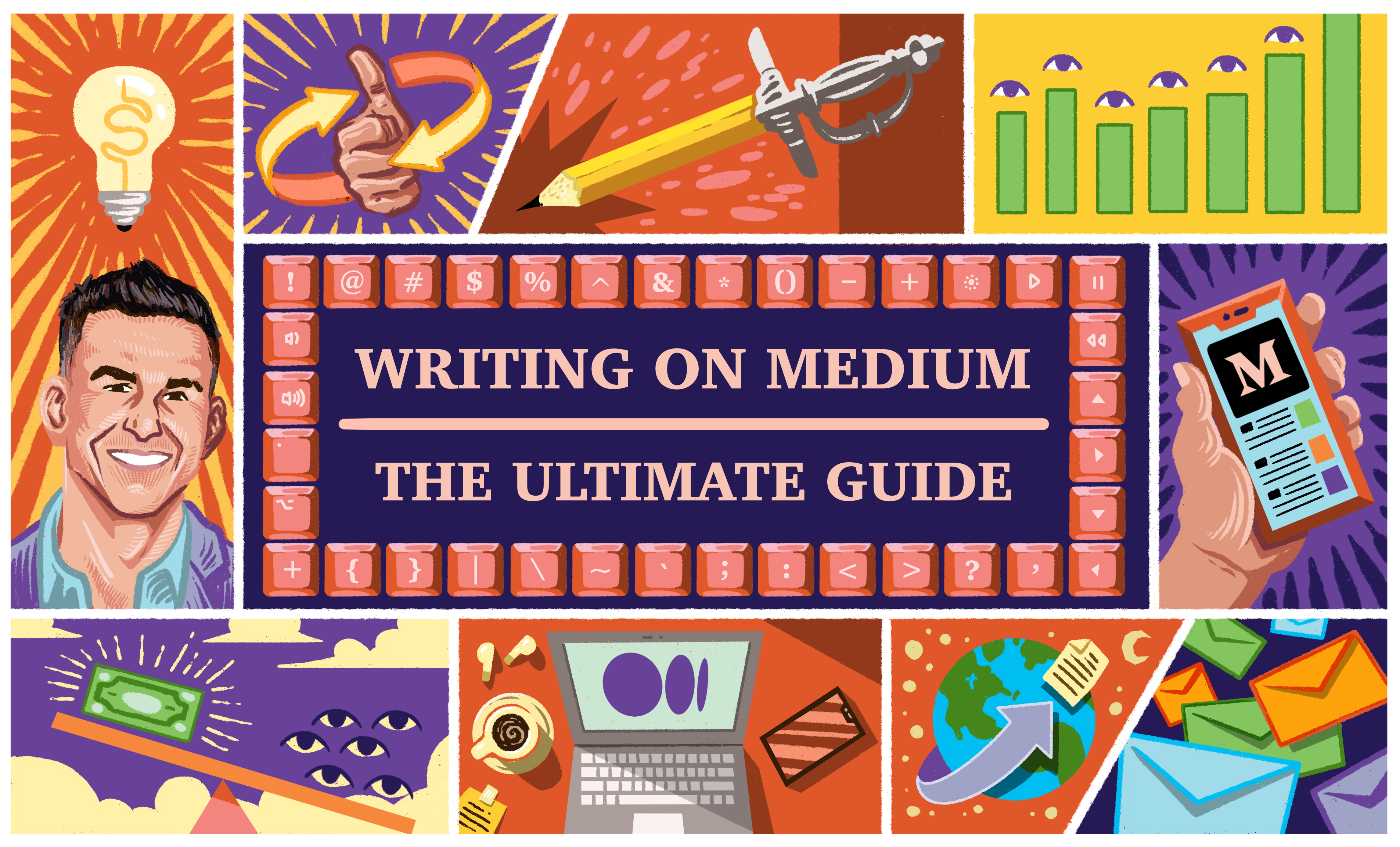Writers, rejoice: There's a “YouTube for articles” — and that website can help you both grow your audience and make more money along the way.
I'm talking about Medium.com, a free, open-source publishing platform established in 2012. When leveraged well, Medium can help you get seen online, attract ideal readers, and even make money in the form of royalties on your writing.
In this comprehensive guide, we’ll go through how Medium works as a platform, along with everything I did in my first year on Medium to accelerate results.
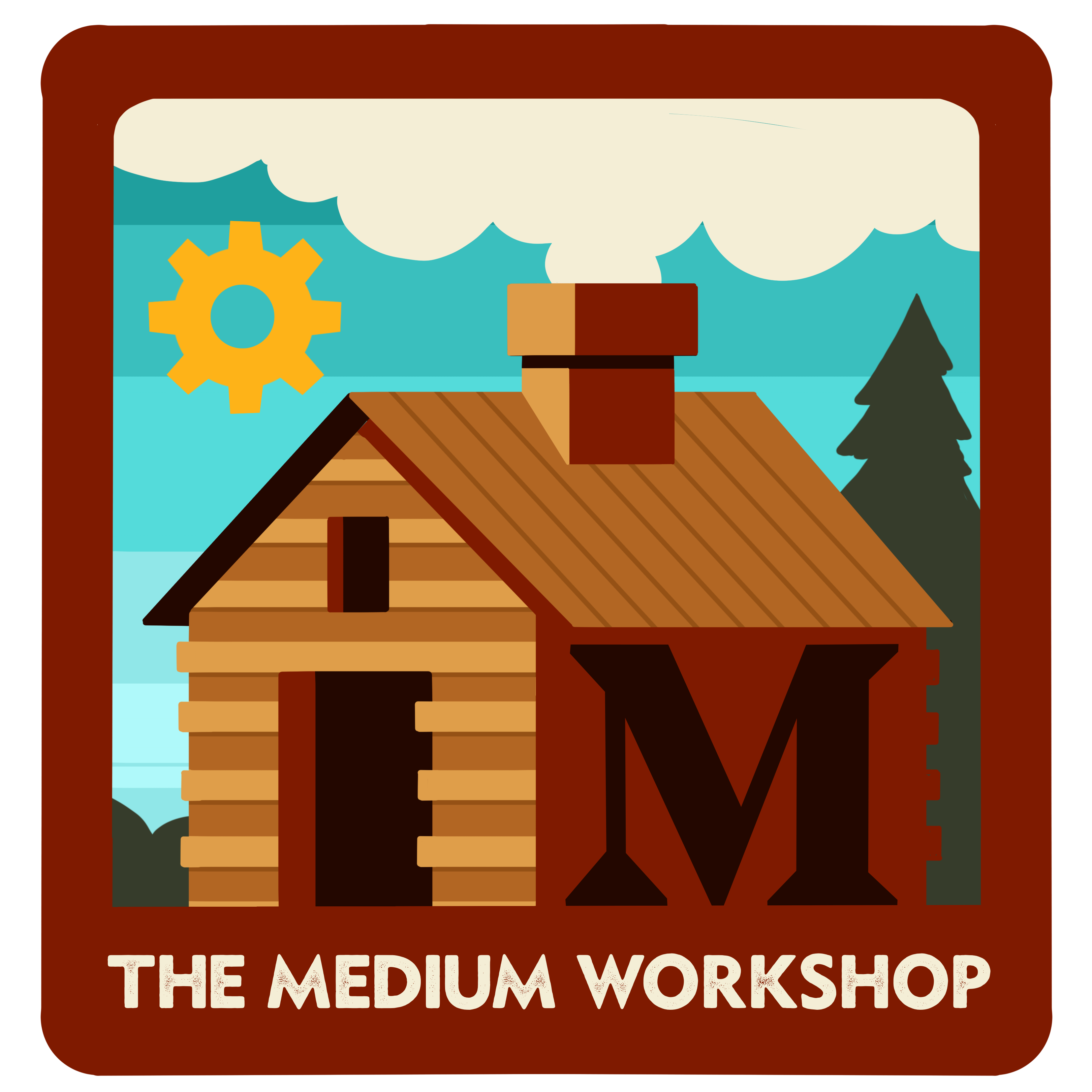
“It shaved years off my learning curve”
Dial in your strategy on Medium with The Medium Workshop , a comprehensive on-demand workshop replay that covers everything you need to know. One payment, lifetime access.
Table of Contents
Example Results on Medium
I began writing on Medium because I was tired of using other social media platforms to try and promote my expertise. These social media platforms felt crowded, and it was hard to break through. It was also hard to attract people who actually wanted to read things, rather than just scroll.
In my first year on Medium, I attracted a little over 220,000 views to my articles.
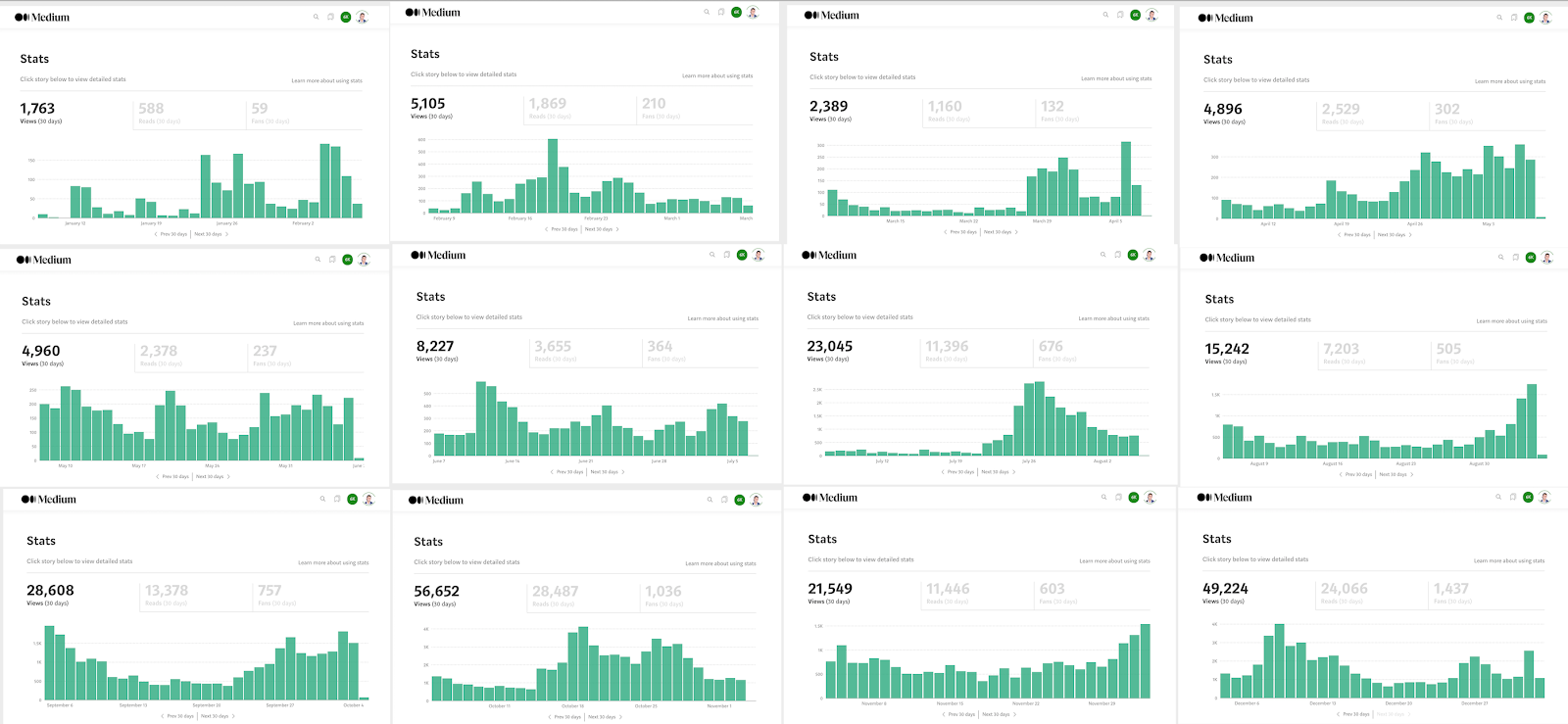
30-day traffic numbers for every month in 2020.
I also brought in a net gain of over 3,600 new email subscribers to my list by offering a freebie at the end of my articles and having the right strategy.
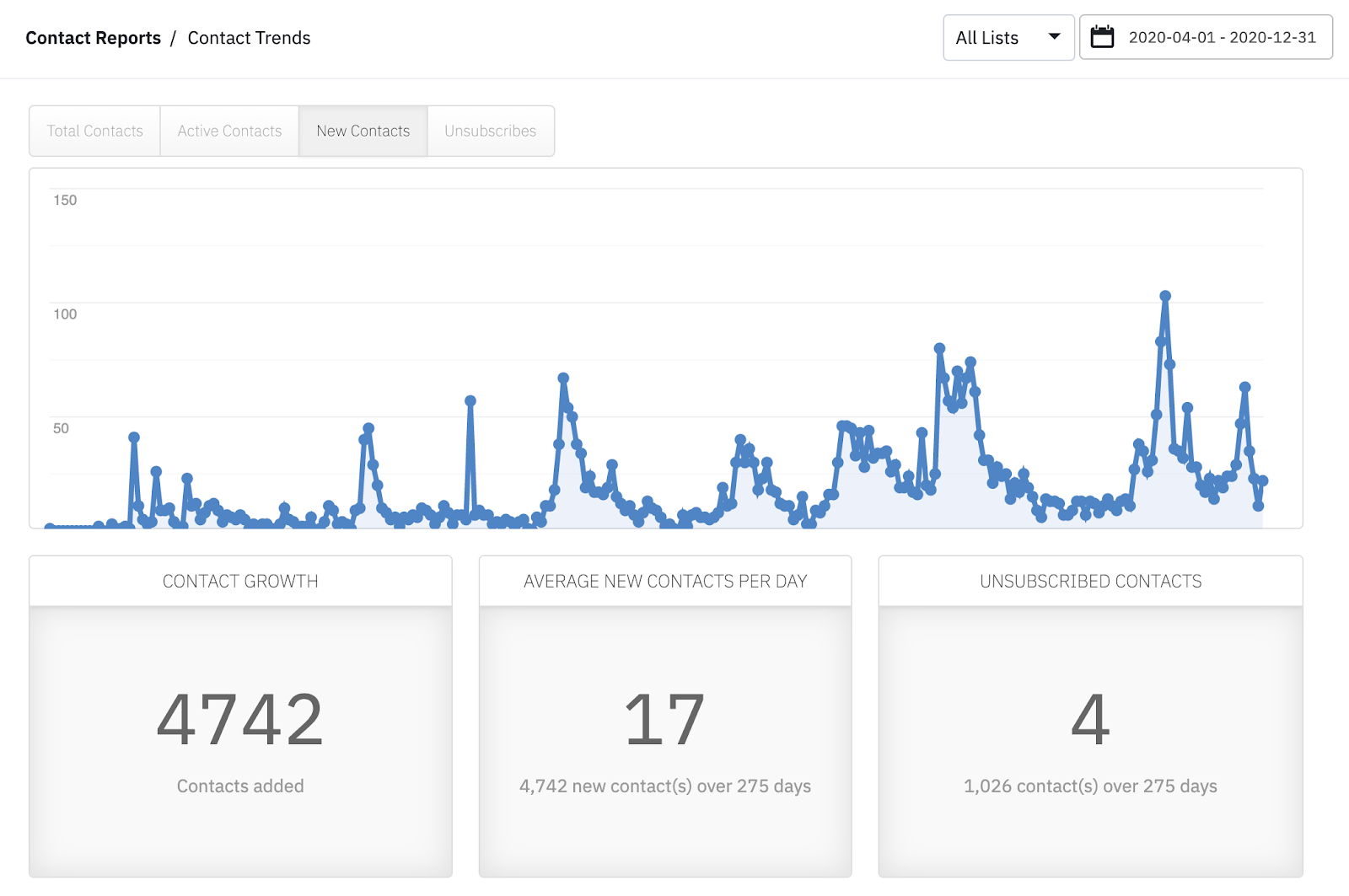
Email subscriber growth in 2020. Gross growth: 4,742 subscribers. Net: 3,600.
At the time, when readers subscribed, I offered them a limited-time discount for one of my mini-courses. I put one in place about halfway 2020, and another one in place near the end of the 2020.
Together, these made $10,714, and once they were all set up I didn’t have to lift a finger to fulfill. We like this!
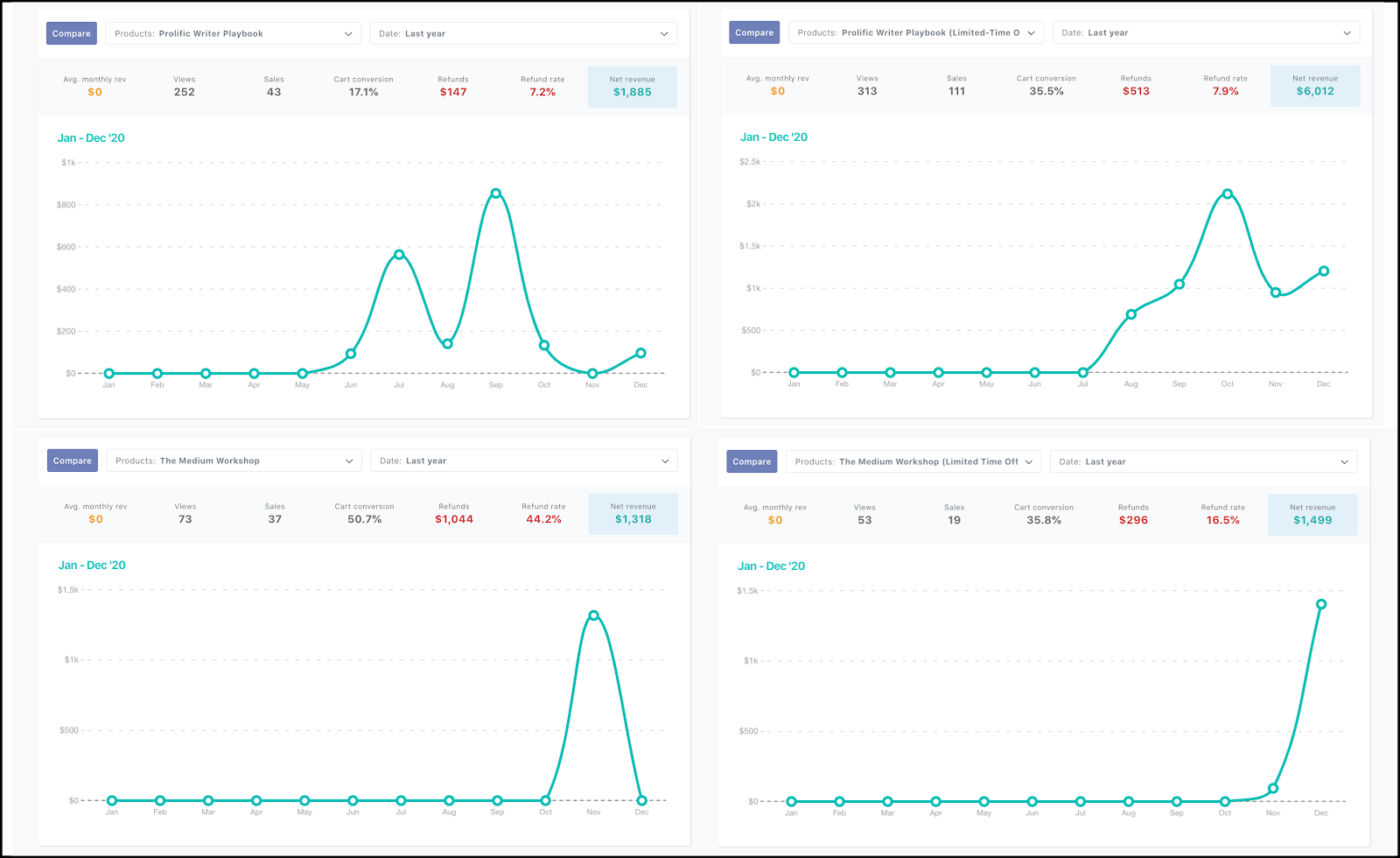
Monthly revenue numbers for every month in 2020 off of "limited-time offer" email signup offers. Two different offers each had two checkout link options — four screenshots in all.
My favorite result, however, is that when you put your articles behind a paywall on Medium, you are paid based on member reading time from Medium’s $5/month paying subscribers. You can share paywalled articles with your non-Medium audience for free using something called “friend links”, which we’ll get into in part five.
With Medium, you can get paid and grow your email list at the same time. In 2020, my first year on the platform, Medium paid me $7,685.98 to grow my list.
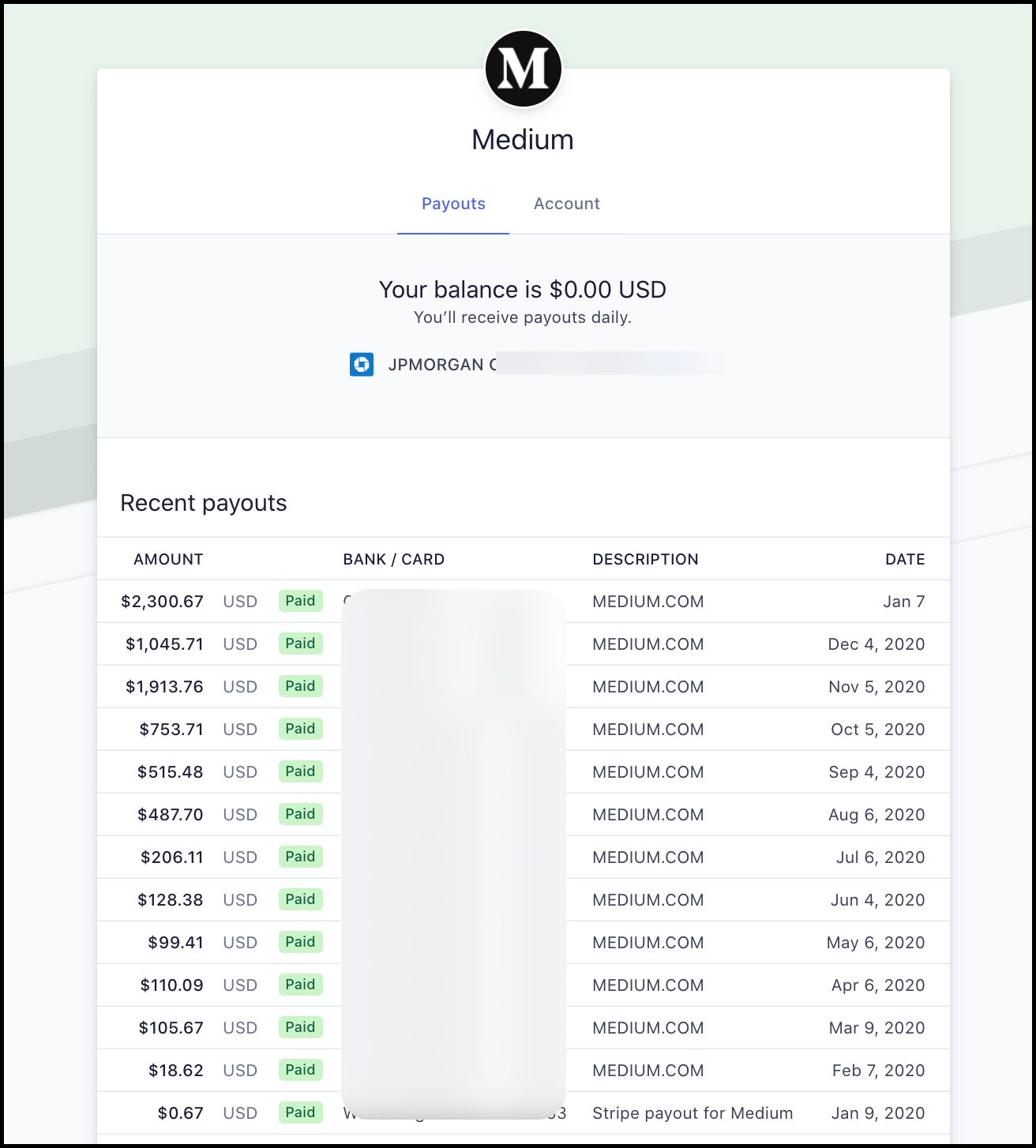
Payouts from the Medium Partner Program in 2020.
Most of that money went back into my business. I did also splurge and use some of it as fun money to buy a Nintendo Switch, which made pandemic living a little more tolerable.

Medium: A great platform for funding your midlife crisis
I actually didn’t make much progress in those first three months, because I was making critical mistakes. I probably left thousands of dollars and subscribers on the table in this first year as a result.
What Makes Medium Unique
People hate on Medium, but that’s because they don’t know how to use it correctly.
Most people think of Medium as a blog where they can self-publish their writing in lieu of a website. Although Medium can be used for that -- and millions of people who want to write do so every month -- some articles get way more views than others.
- There are different curation techniques you can use to ensure a post gets distributed over and over again on Medium’s platform and in Medium’s daily emails to subscribers, giving you more visibility than a Wordpress website. These are called curated posts.
- There are user-owned publications that have large followings and will let you publish your work with them. Some of them will also let you self-promote. Publications are a great growth driver.
- Comments on content do not influence article distribution. This one is big. It means the quality and value of your writing determines how well you get distributed, not popularity, which is how things are on social media. Medium is a great platform for people who have something thoughtful to say.
Also, since Medium’s design is very clean, you don’t have to compete with super fancy brands, video creators, or thirst trap images. Readers don't expect fancy stuff here. The platform is designed for writing and publishing to shine.
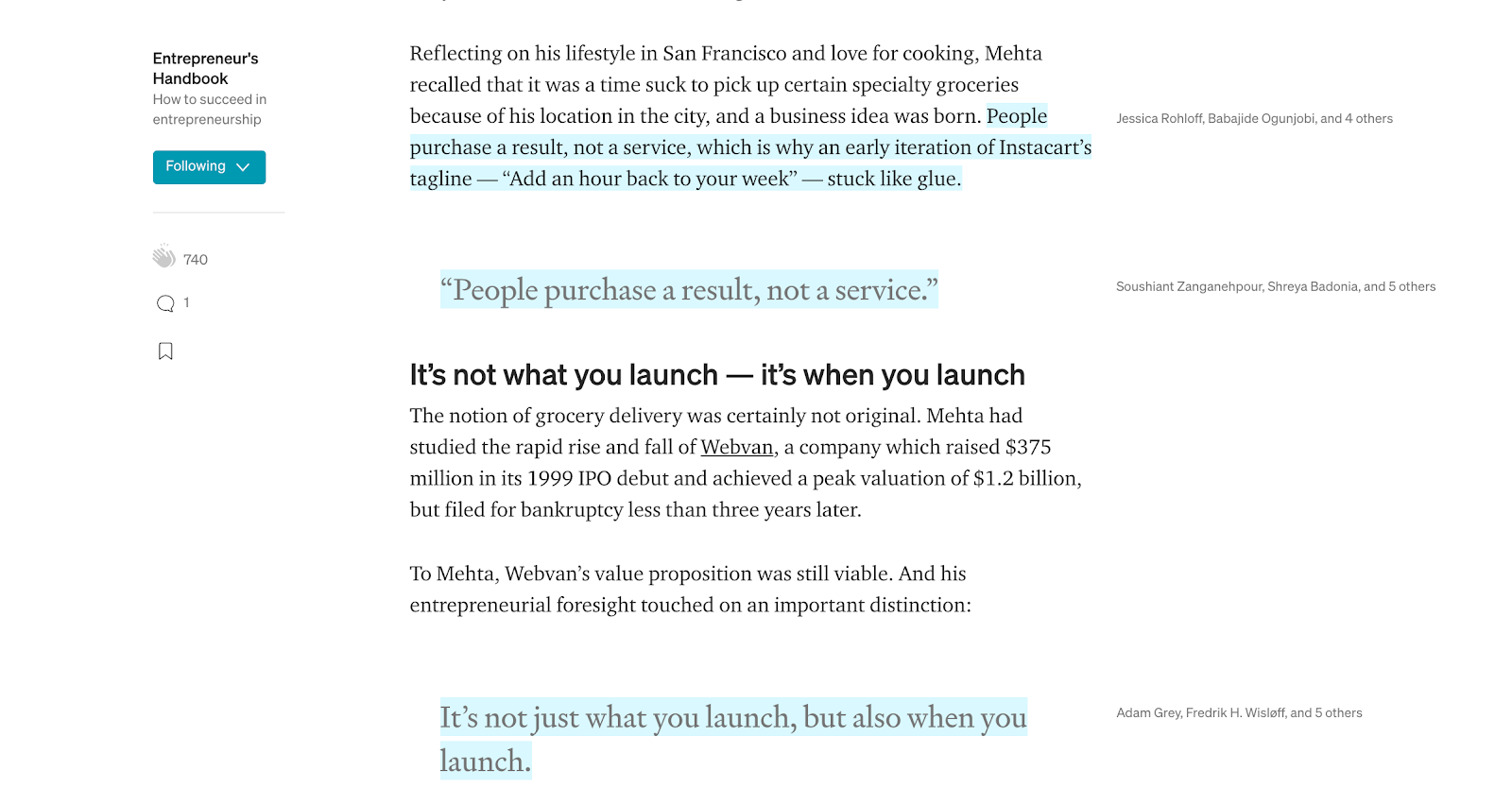
Screenshot of the Medium interface. Words are the star.
Medium is a terrific platform. In this supersized guide, we'll go through everything you need to know to get started.
What Is Medium?
Medium was founded in 2012 by former Twitter founder Ev Williams as a way for people to start writing and publishing updates that were longer than 140 characters. Williams recently stepped down, and was replaced by current CEO Tony Stubblebine in 2022.
One reason professionals are confused about Medium is that it’s changed a lot over the last few years.
- From 2012-2015, the site operated mainly like a digital magazine.
- In 2017, Medium introduced a membership paywall and uses its paywall earnings to incentivize and pay writers to create quality content.
- The last audience size number given publicly by Medium was 60 million readers, but that was in 2016. It’s estimated today that Medium has over 100 million readers.
In recent years, Medium has also become the vehicle of choice by various celebrities, politicians, and big thinkers to tell their stories or make official statements.
For example, here’s a post from U.S. Vice President Kamala Harris sharing about the economy.

And here was a post from influencer Chrissy Teigen sharing about a grief-stricken personal experience.
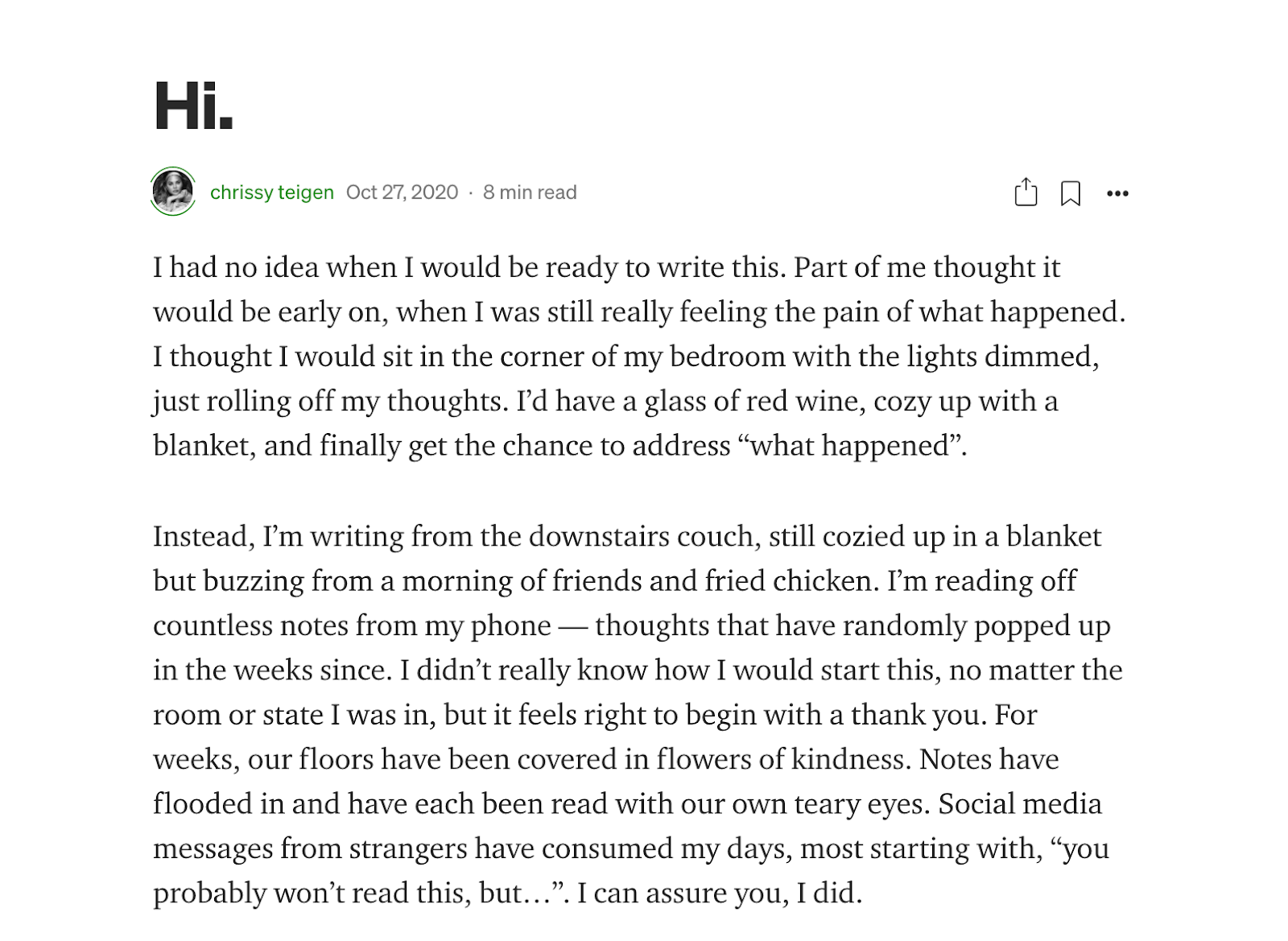
There are also successful authors who use Medium regularly. Laura Vanderkam, a bestselling author, writes regularly on Medium.
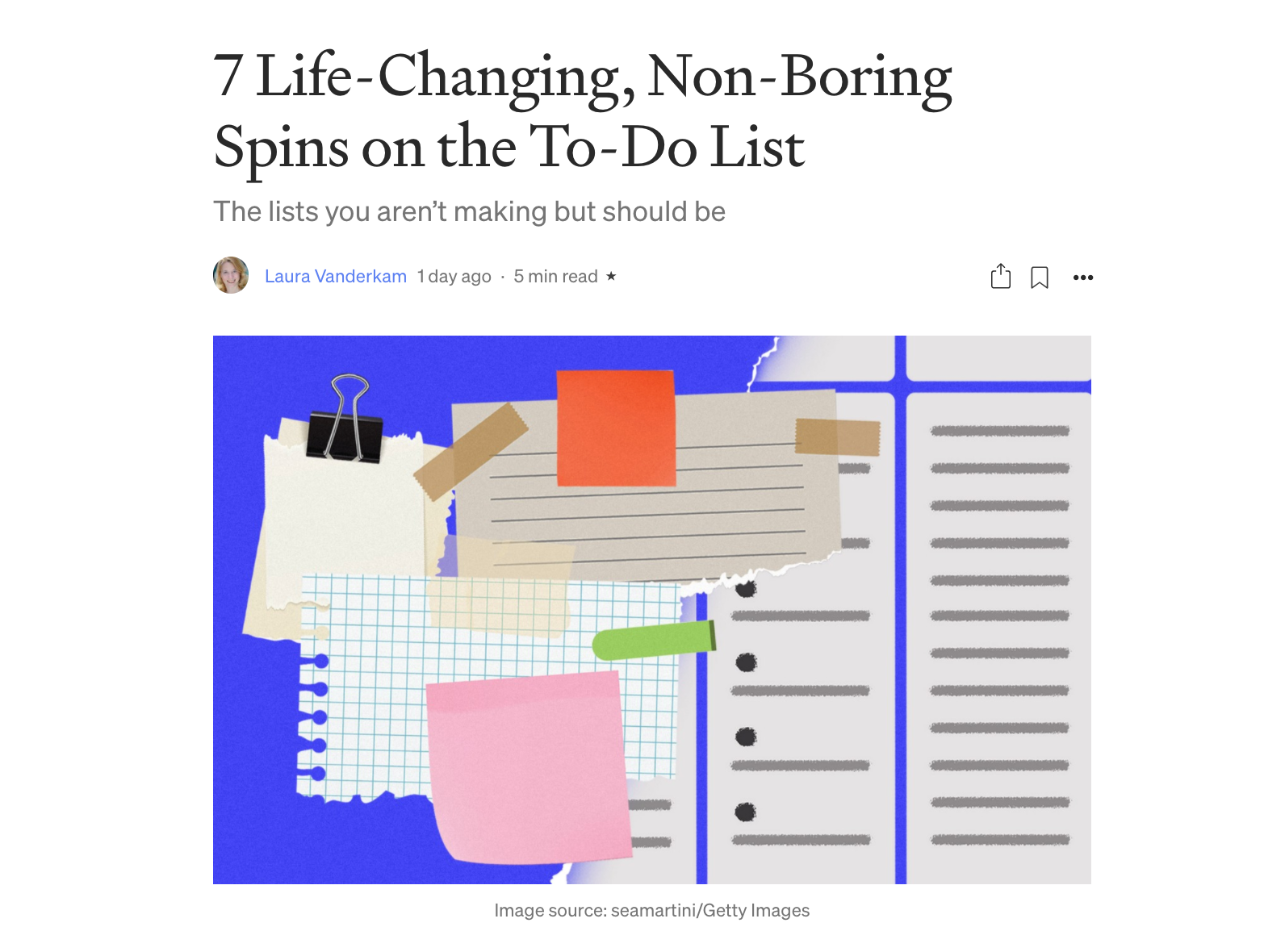
Susan Orlean, also an award-winning author who was portrayed by Meryl Streep in the 2003 film Adaptation, also writes on Medium.
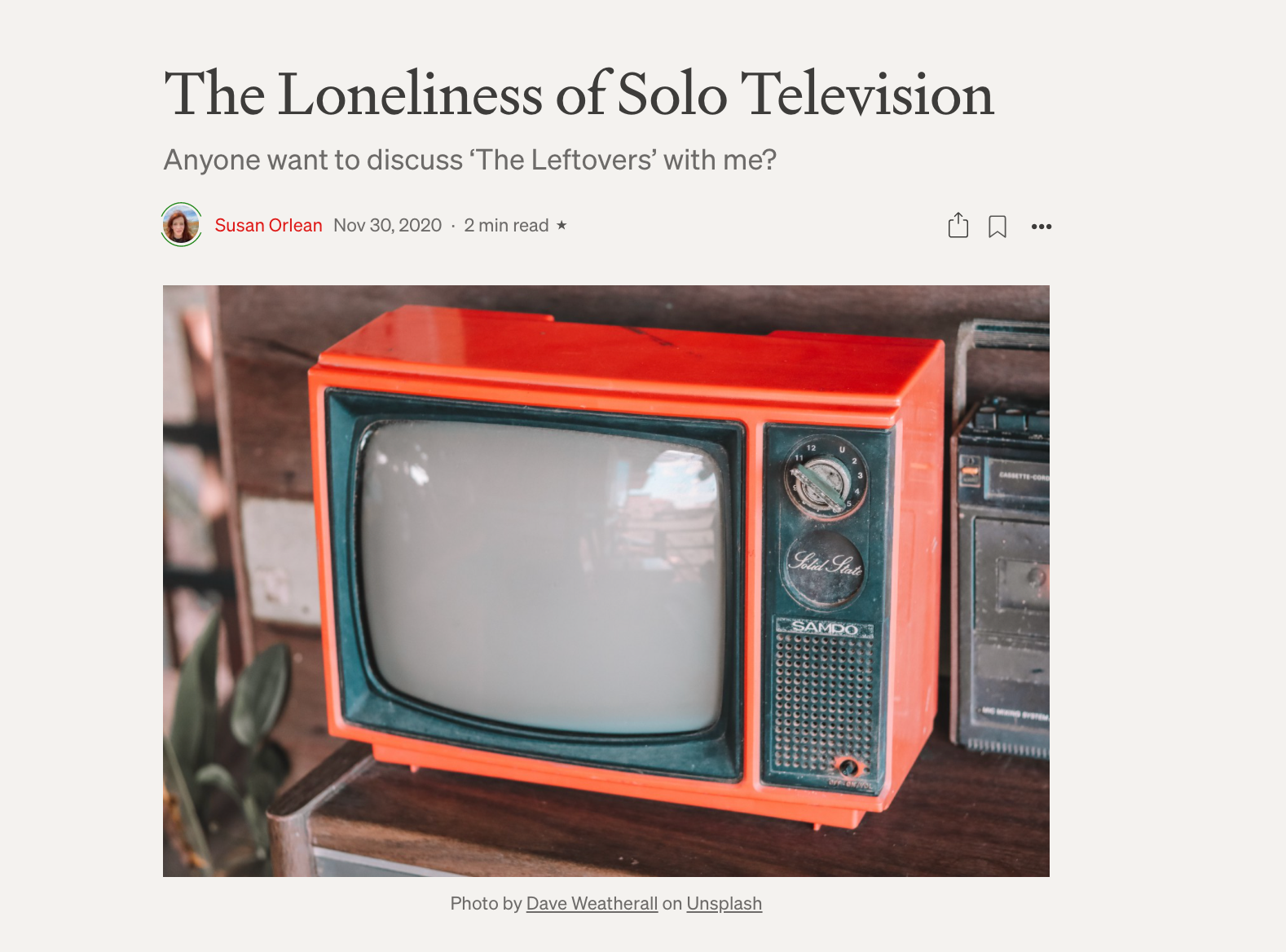
Medium Has a High Domain Authority
The SEO company Moz created a metric called domain authority to help users measure the likelihood that a search engine like Google or Bing will rank a certain page of a website. This score is not the only factor in ranking search engine results, but it does help to measure the “health” of a website.
If you choose to write on Medium instead of, say, your own blog, you’ll be able to “piggyback” on Medium’s high domain score. For example, here was the domain authority of my website at the time I started writing on Medium, a piddly 30 out of 100.
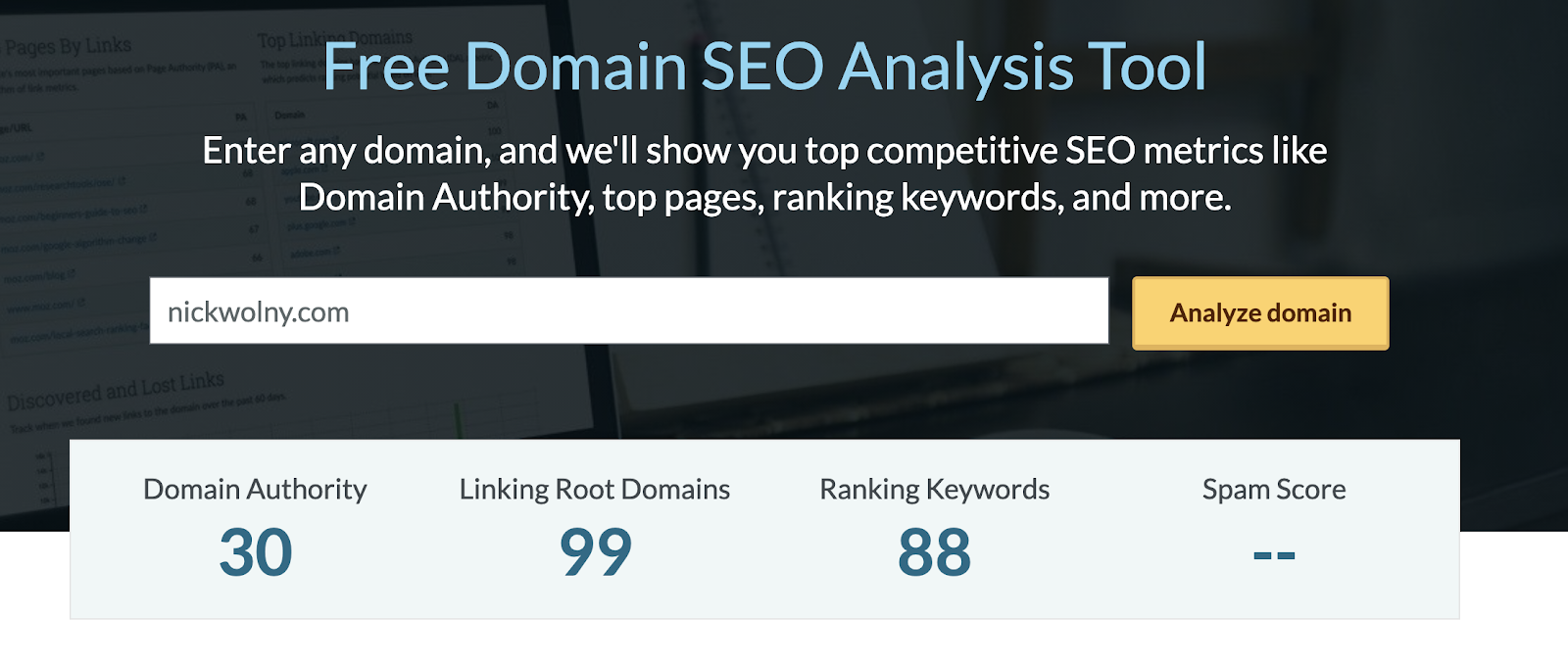
Here is the same domain authority score for Medium.com: a whopping 95 out of 100. That ranking is even higher than major media publications like Entrepreneur and Fast Company.
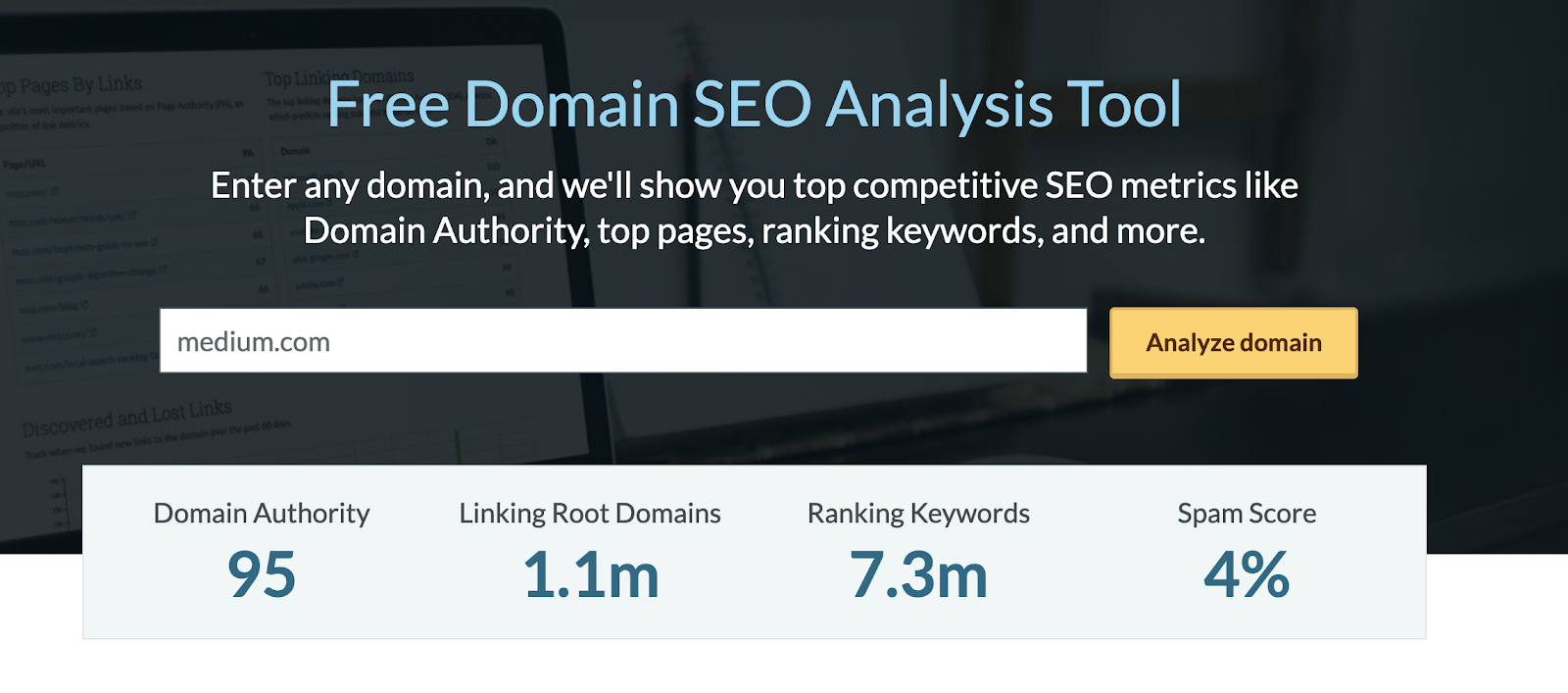
In terms of visibility, your post usually has a better shot of being seen by new eyeballs when it’s published on Medium. It can rank in search engines. Some posts get picked up by Google Discover as well.
I would have never been able to achieve that if I had published the same piece on my own blog, because my domain authority is too low. Medium, on the other hand, has enormous domain authority.
Usually, writing for websites with a high domain authority is a challenge. I write for Entrepreneur and Fast Company, and to write for these sites, I have to pitch every article. A lot of pitches get turned down, and if a pitch is accepted, I wait two to six weeks for it to get published.
Insight:In terms of domain authority, Medium is at the level of other tier-one media publications and top websites, but much easier to get into.
When you use Medium, you don’t have that problem. And in many Medium articles, you can promote a freebie, personal newsletter, or your own website in your story. This is a big opportunity for entrepreneurs.
Key Takeaways
- Medium has had many formats since inception, but has hit its stride in the last few years.
- Medium has the buy-in of industry professionals, especially with a new incoming CEO.
- On Medium, your posts can “piggyback” on the site's domain authority, giving you more visibility in search engines.

“Easy to understand and implement”
Dial in your strategy on Medium with The Medium Workshop , a comprehensive on-demand workshop replay that covers everything you need to know. One payment, lifetime access.
Why Write on Medium Instead of a Blog?
In the previous chapter, we talked about how domain authority is one of the best reasons to write on Medium instead of on your blog. But what if you don’t have a blog, or don’t care about having one?
You should still start writing on Medium. Writing on Medium has several advantages with regard to visibility, design, and ease of use. Let’s go through a few of them now.
No. 1: Medium Will Curate Your Articles
When you put a story on Medium, it gets read by people at Medium called curators. That’s right: actual humans read every single article posted on Medium!
If curators see that your article follows Medium’s guidelines, and feel that the article is of a certain level of quality, they will choose your article for further distribution and curate your article on various curation tags.
You can see if your article has been curated in the stats section of any article. It will say "chosen for further distribution."
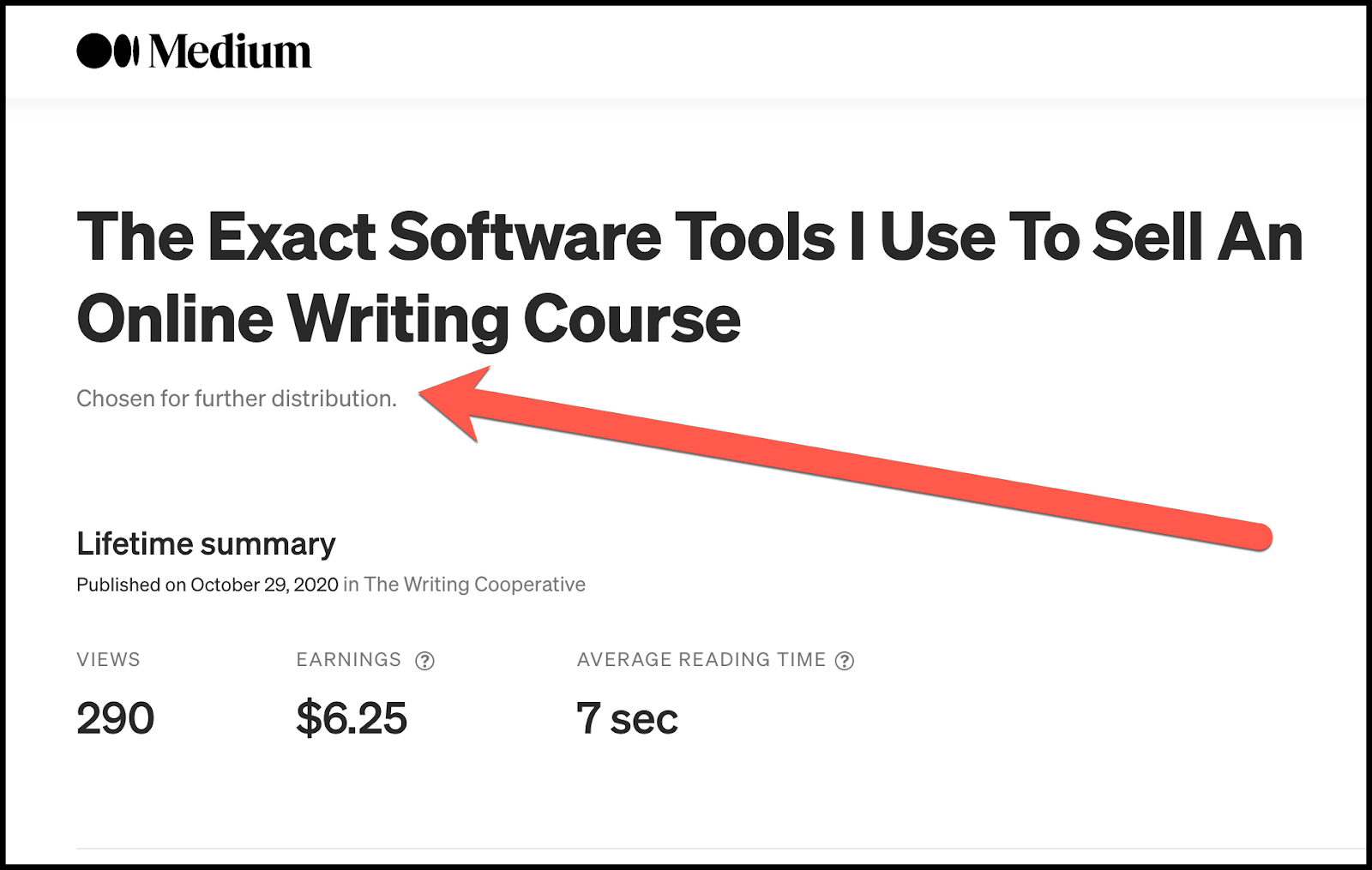
A screenshot from the article stats section.
Tags are topics on Medium that readers can choose to follow. You can also tag your own articles with up to 5 tags, but only a curator's blessing will determine whether your article will be actively distributed to followers of that tag.
I can’t overemphasize enough how valuable this is. As someone who has spent years in marketing consulting, agonizing over how to ensure good content gets seen again and again for years to come, having a way for content you’ve published to be actively pushed to readers over and over again is amazing. Readers see curated articles in two places: Their dashboard and daily digest emails.
The Medium dashboard recommends articles every day. Think of it like a YouTube dashboard; the recommendations are based on a mix of your reading history and the tags, publications, or authors that you follow. The dashboard got a nice redesign in the second half of 2022 — personally, I love it.
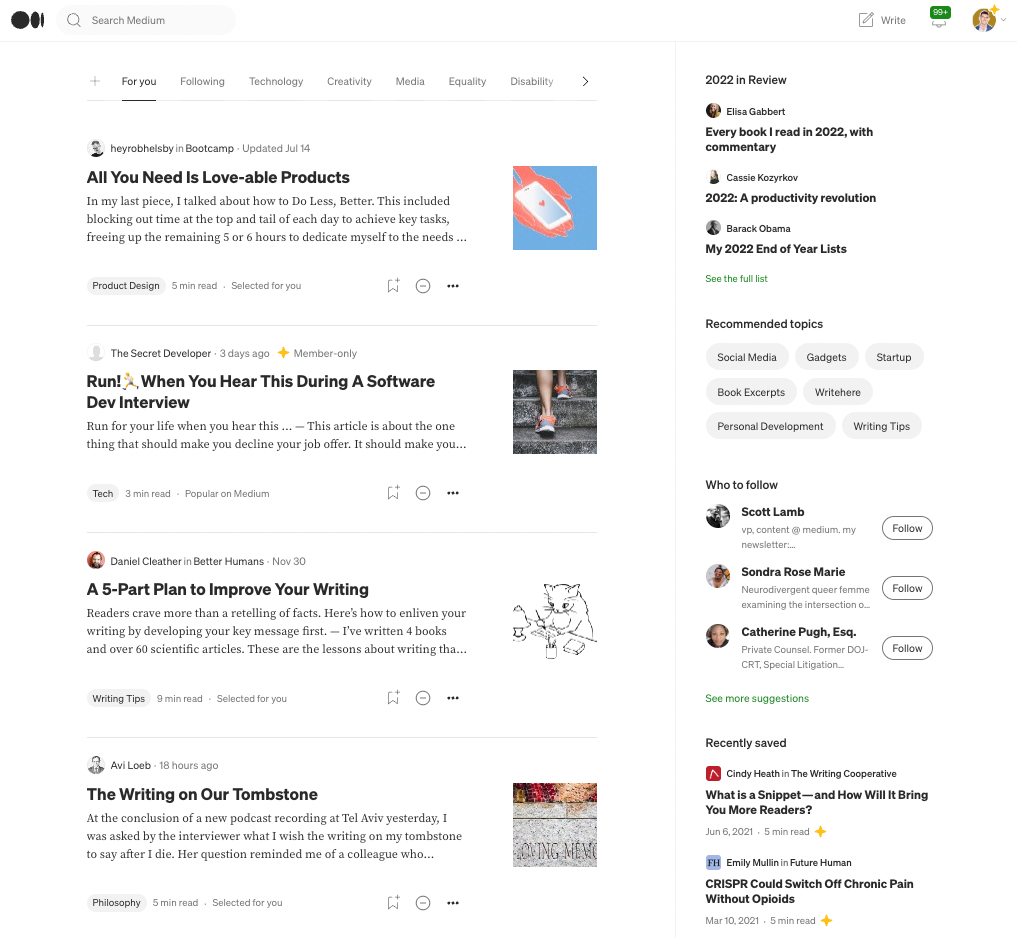
A screenshot of the Medium dashboard. Notice the recommended articles; below the article, you can see which tag the article was curated in ("product design", "tech", "writing tips", "philosophy").
Your curated article may also be placed in a daily or weekly digest email that goes out to readers. Your article will literally land in people’s inboxes. In some circumstances, your article title and your name will actually be the headline of the email itself, which is great for visibility.
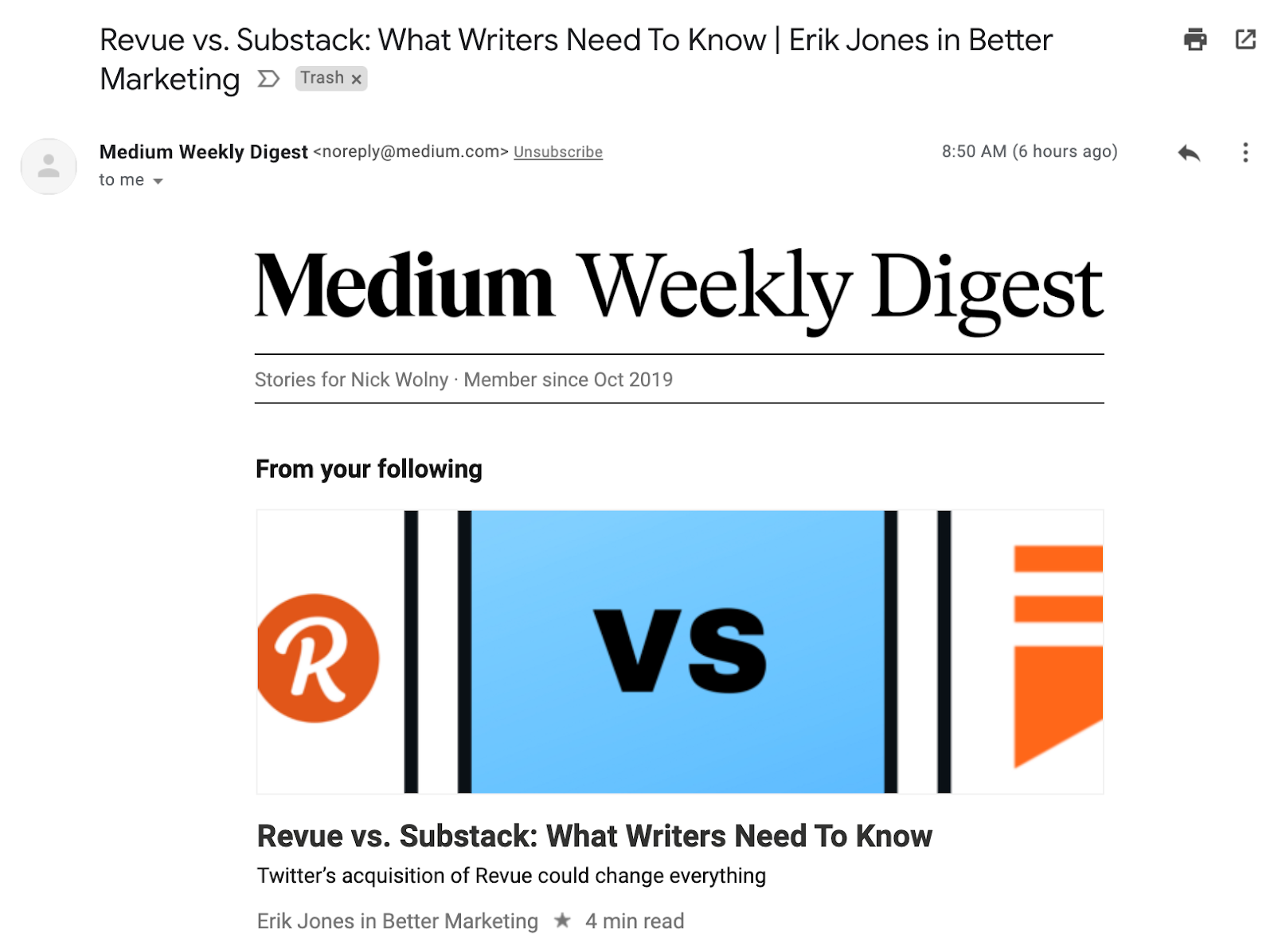
If your article gets curated, that curation includes being incorporated into daily or weekly digest emails that go out to users. In some cases, your article will be the subject line of the email.
No. 2: Medium Gives You Valuable User Feedback
As content creators and entrepreneurs, we know it’s virtually impossible to get everything right on the very first try in business. That’s why you need feedback loops.
You want to know:
- How many views your articles are getting.
- How long your readers are staying on the page.
- Which topics or article styles worked – and which ones didn’t.
These stats are similar to what you’d see in a Google Analytics dashboard, but it’s contained entirely within Medium. If you’re focused on making money, you can also see how much money an article has made from articles placed behind the paywall.
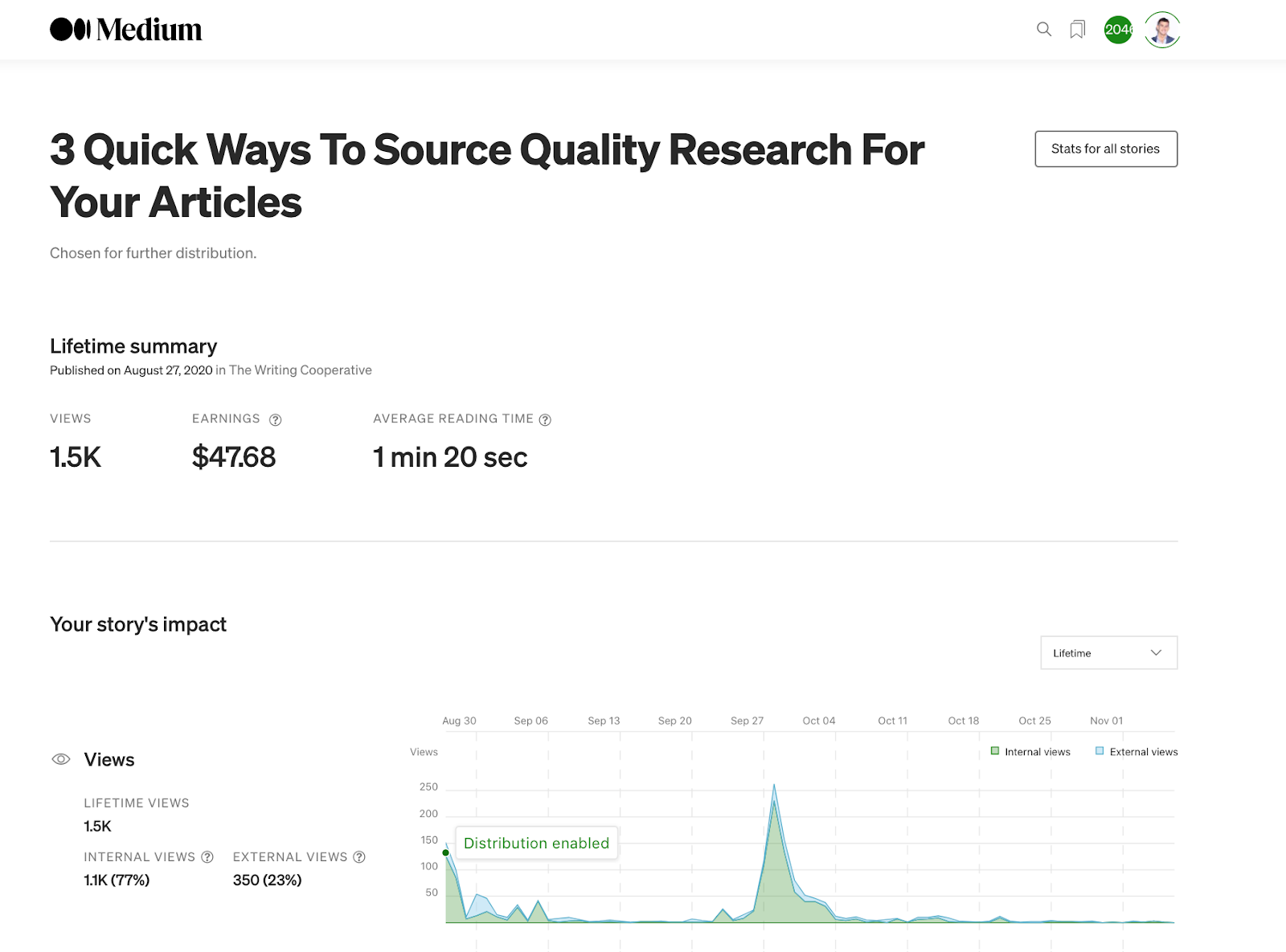
Screenshot of an article from the article stats page, including payouts from the Medium Partner Program.
We’ll touch on stats more in Chapter 6, but know that it's more than enough to guide you.
The only valuable metrics missing from the stats section, in my opinion, are impressions (how many users saw the article title, including ones that didn't click) and in-article link clicks (how many users clicked links, and which ones they clicked). I'm a grizzled old marketing consultant, so I'm picky, but this stats page is still helpful.
In this example, you can see a day where an article of mine was shared in a media outlet’s newsletter, causing a spike in reads from non-Medium subscribers.
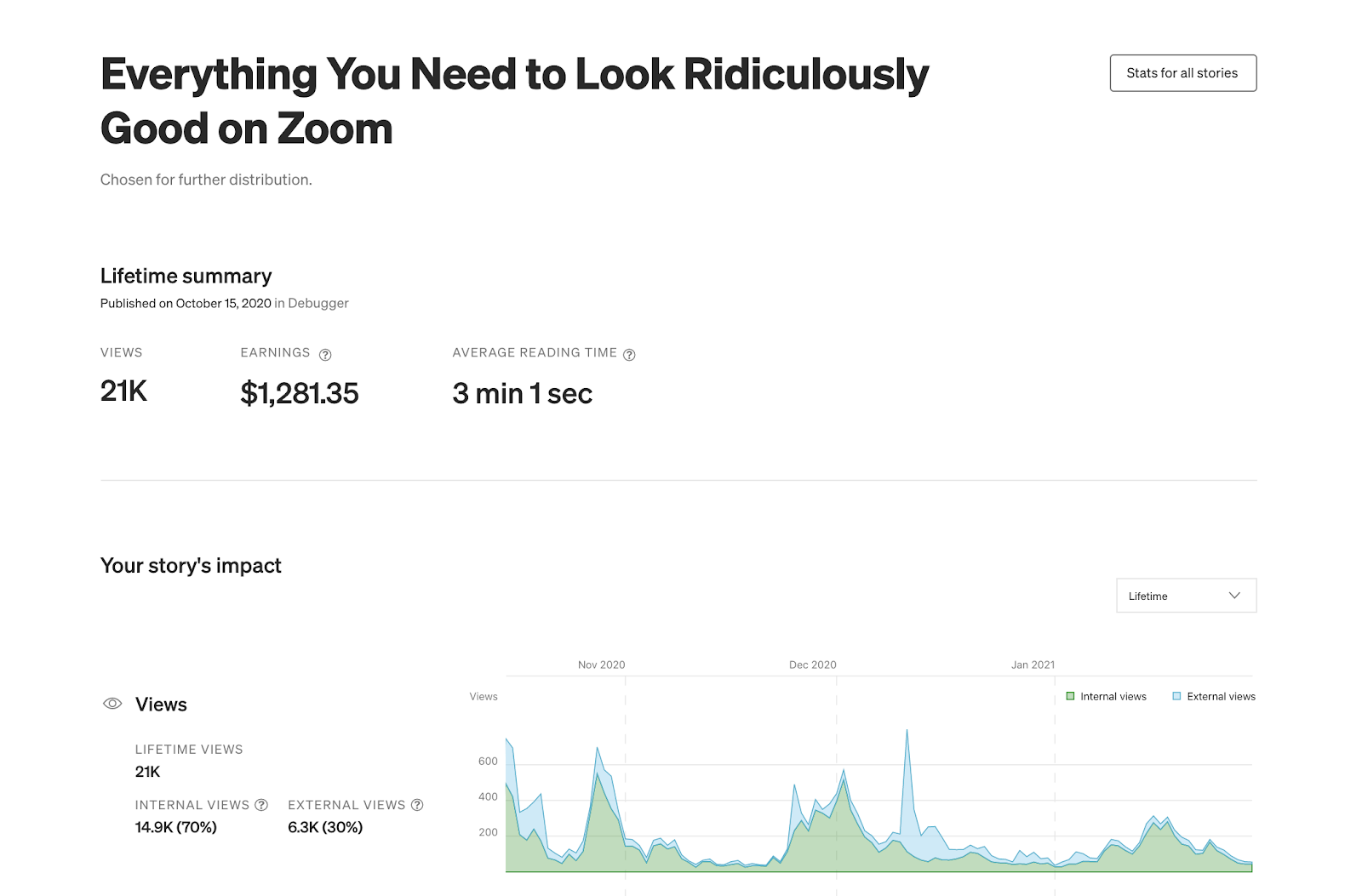
A couple months after this article was published, someone published it in their popular email newsletter (the blue spike on the chart). Since those users weren't Medium subscribers, though, I didn't get any extra payout from the Medium Partner Program.
Overall, I like that the Medium stats dashboard gives you all of the information on a given story you need to make decisions, and none of the stuff that leads to information overwhelm.
No. 3: Medium Readers Actually Like to Read 🤯
This is a more subjective note, but I think it’s important to keep in mind: Medium’s readers actually want to read content.
It can sometimes feel like the internet is overwhelmed with videos, sassy GIFs, crazy-fast memes, and other “fast” content. Readers are here to read words, so if you don’t have any branded design or anything like that, you’re in the clear.
Since my main tool for connecting with people is my email list, I want to attract people who like to read stories. Medium has this exact audience built directly into the platform.
If you sign up for the Medium Partner Program (Explained more in chapter 5), and put your articles behind the paywall, your audience consists of readers who are paying to read on the platform, which means the audience quality is even higher.
These readers are paying to read stories just like yours, and you’ll get paid as a result. Signing up for the MPP is optional, but you’ll access a more invested audience by doing so. I put all my articles behind the paywall, personally. You need a minimum of 100 followers on Medium to unlock the Medium Partner Program.
Key Takeaways
- Medium’s curation tags are one of the most powerful ways to get longevity out of your articles.
- Medium gives you feedback loops and data so you can figure out what works and what doesn’t.
- Medium subscribers actually like to read and value a platform that is word-centric, rather than flashing lights and livestreams everywhere.
Related reading: How to Get Curated on Medium
How to Write for Medium Publications
When writing on Medium, you can choose to either self-publish your article or submit your article to a publication for consideration.
Publications are an exciting concept within Medium. In a way, they are like miniature media outlets, catering to audiences within Medium’s overall ecosystem.
Related: The Top 20 Active Publications on Medium
Users on Medium can choose to follow different publications, and when they do so, new stories published in that publication will be put in front of them. This is a great way to get a post in front of your ideal readers: people who want to read about the very subject matter you regularly publish on.
There are all types of publications. For example, one publication I like writing for, Entrepreneur’s Handbook, covers business and entrepreneurship.
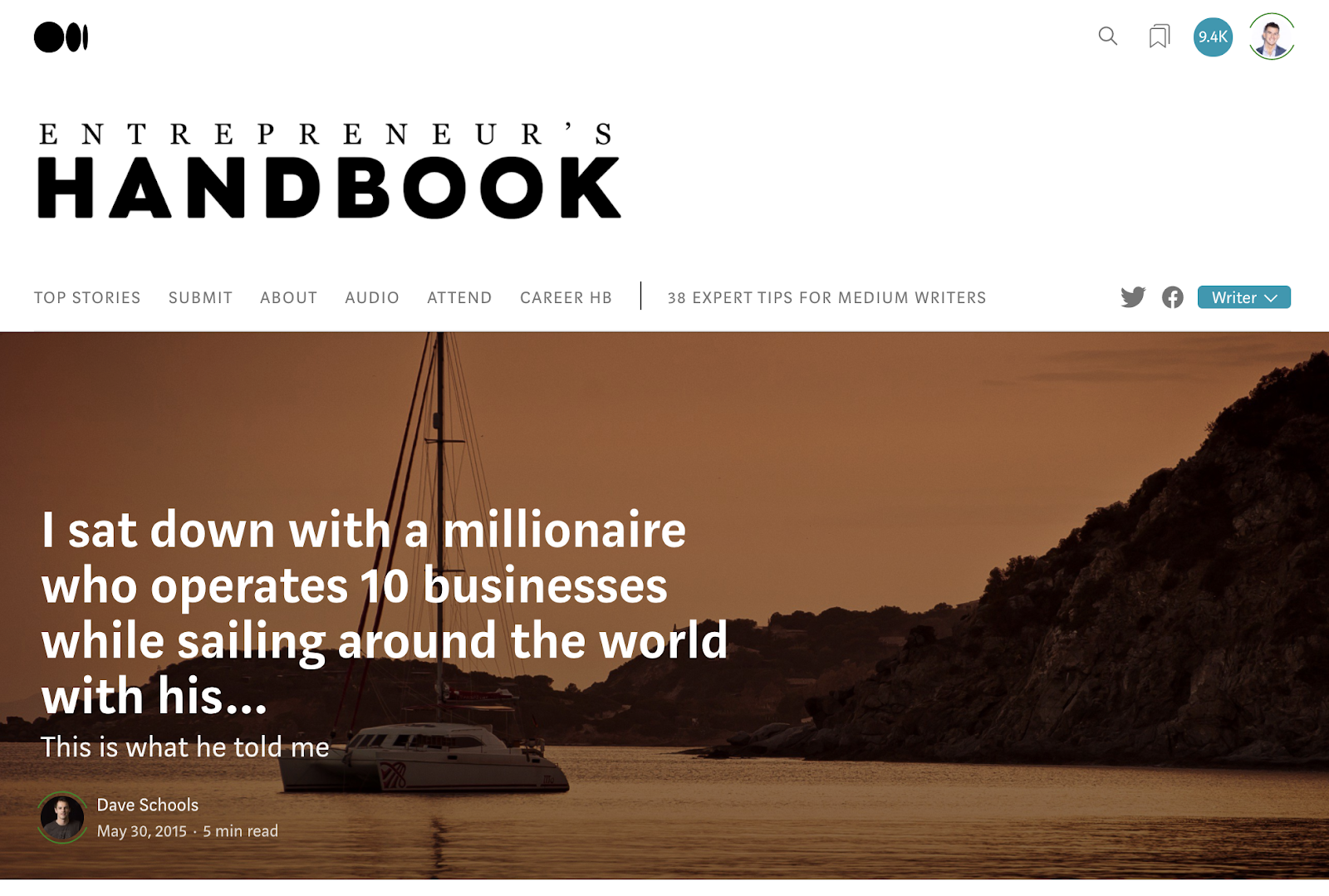
Here’s a thoughtful publication on mental health called Invisible Illness.
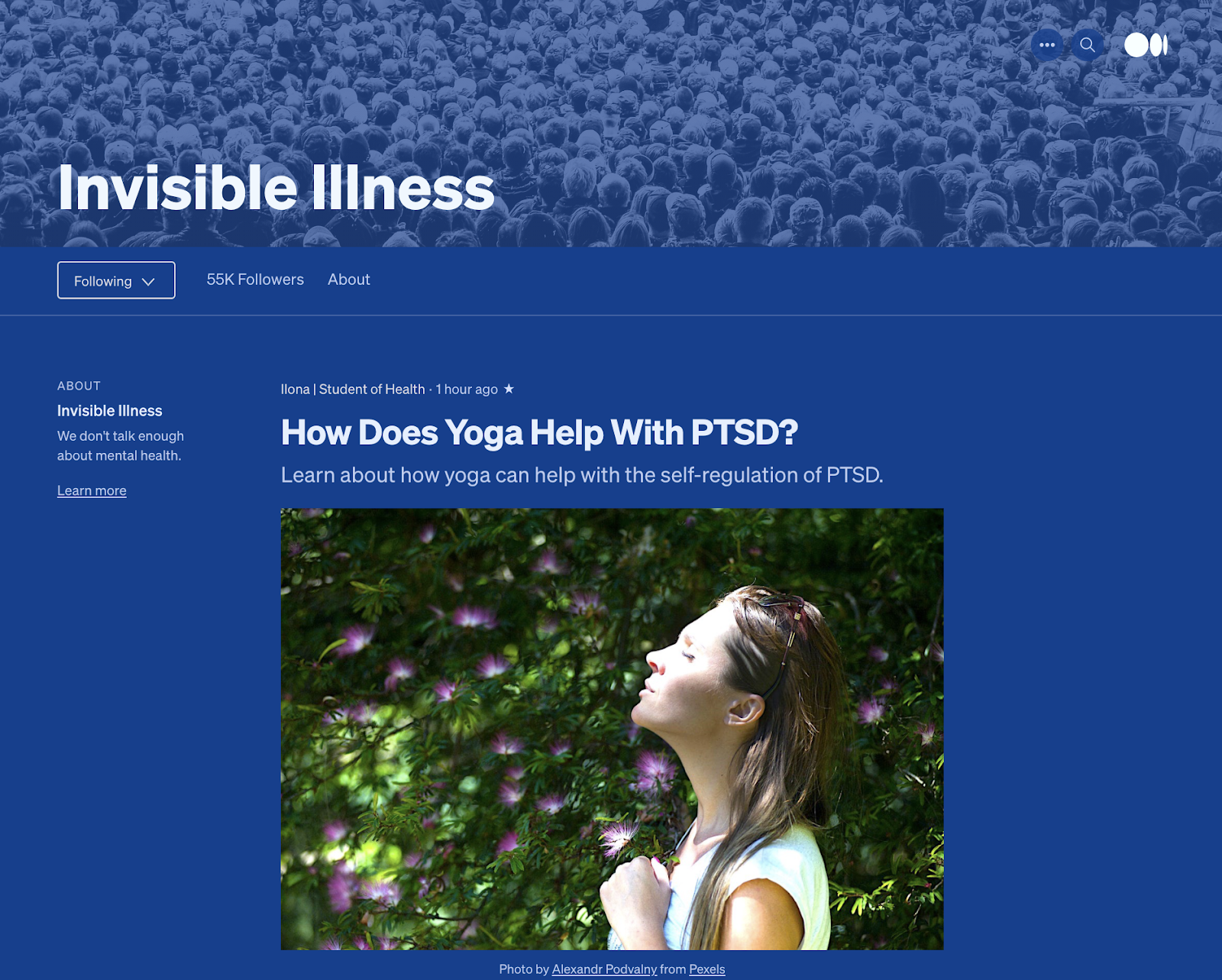
Mind Café, a personal development publication, has over 100,000 followers. The publication actually launched a quarterly physical magazine as well.
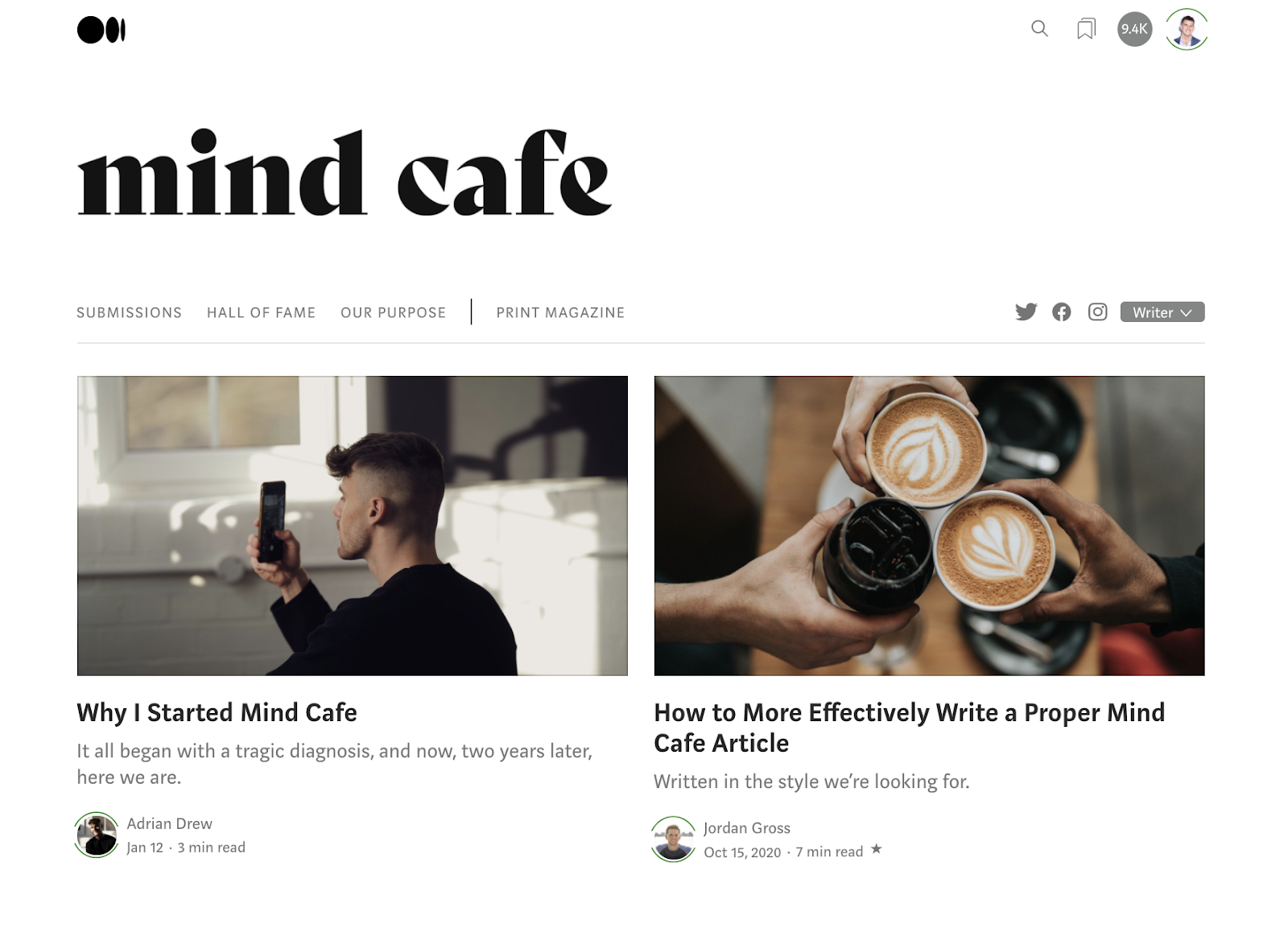
Generally, there are two types of publications.
No. 1: Publications Owned by Medium
Editor's Note:Most Medium-owned publications are now defunct, as of mid-2022.
For the most part, Medium-owned publications are no longer active. But it’s important to know their history and how they worked with writers to publish stories.
In 2019, Medium poached top editors from the media industry to run a series of new niche publications. Some of these publications included:
- Forge, a publication focused on productivity and personal development,
- Future Human, a publication dedicated to cool new science,
- Human Parts, nuanced stories about the human experience, and
- Modus, a publication dedicated to all things design.
Articles published with Medium-owned publications were sometimes distributed to all of Medium, making them a great opportunity to attract readers and followers to your work. They were competitive, but you were paid an upfront stipend when you wrote a post for them.
Most of these editors were laid off in 2021, and the Medium-owned publications were scrapped. If I’m being honest, I don’t think you’re missing much. Posts and stories in Medium-owned publications never did great in terms of distribution, and you couldn’t self-promote your business in them.
No. 2: User-Owned Publications
In contrast, user-owned publications are created by members of Medium themselves. You could hop on Medium and start a publication right now if you wanted to. Some writers create a publication, then make themselves the only contributor for the pub, using it as a portfolio or makeshift website for their stories.
In user-owned publications, the writer submits a completed story draft to the publication’s editors. The editors consider the story, and then your story is either published or rejected with some revision requests or a hard pass.
Here’s the good news: After you’ve submitted to a user-owned publication once, you’ll be able to fast-track future stories for consideration by submitting them directly in the Medium interface.
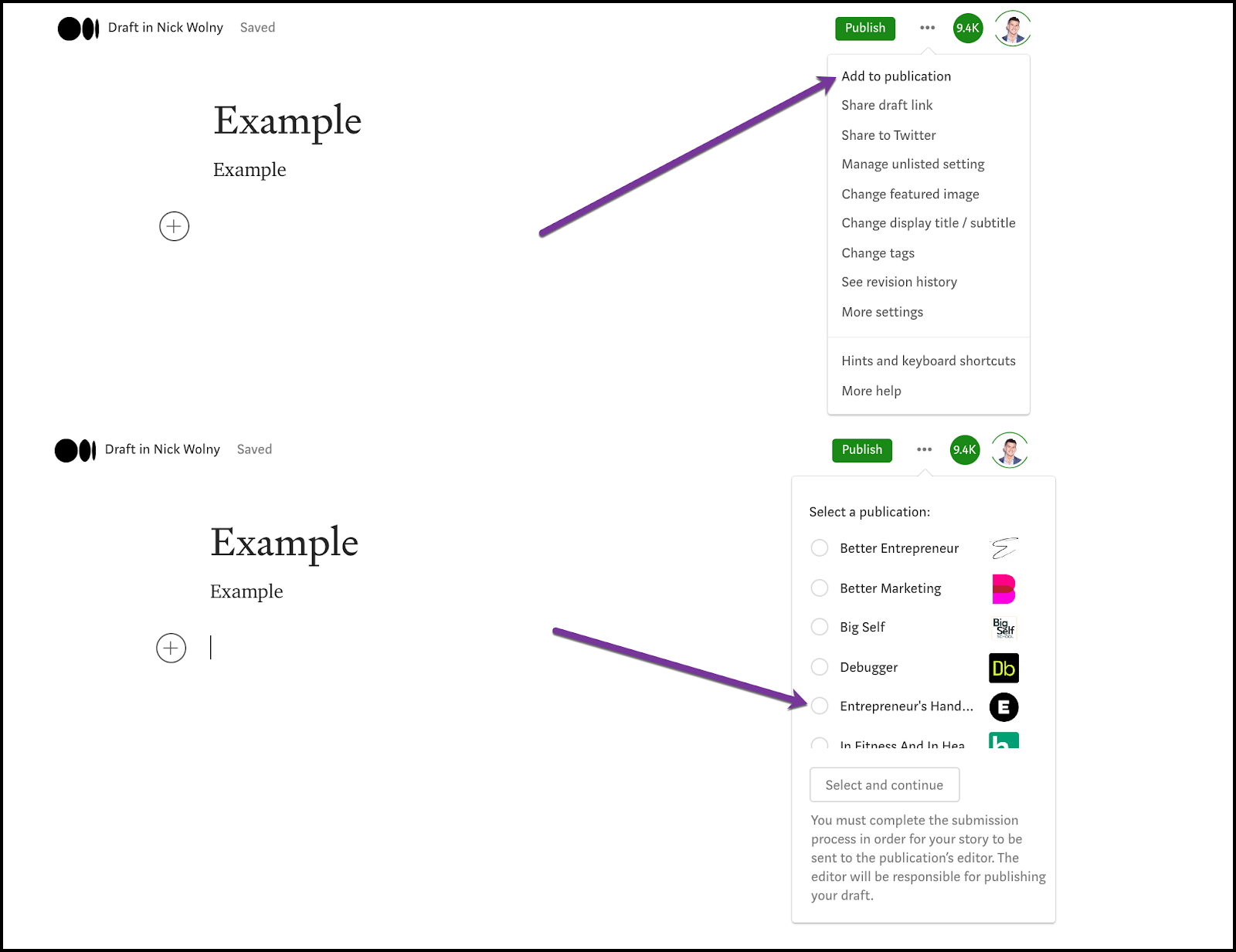
When a publication accepts your article draft for the first time, they will add you as a writer to their publication. It will then appear as a submission option in future drafts.
This brings up an important distinction: for user-owned publications on Medium, you have to write a story first, then send your story draft to the publication in order to pitch it.
To be successful on Medium, you need to get comfortable with writing regularly, and that process can take time and skill. (My free online writing portal, Camp Wordsmith, can help with that.) Develop the skill of writing articles quickly and regularly!
User-owned publications are a really exciting opportunity for three reasons.
User-Owned Publications Are Still Pretty New
User-owned publications only began in 2017, and reached their current form in 2019, so there isn’t a ton of competition at the moment. Publications also become increasingly saturated as time goes on, so it’s good to get in now.
New publications are being created all the time, and Medium’s readership is also rising all the time, so there are always fresh opportunities to get new eyeballs on a story.
User-Owned Publications Are Easier to Get Into
It can be easier to find your footing in user-owned publications and get your work accepted than other media outlets. Even with having bylines in fancy outlets like Entrepreneur and Fast Company, it still took me almost a year to get a piece accepted by a Medium-owned publication.
However, I was building my readership and audience throughout the year by publishing nearly every story in a user-owned publication.
User-Owned Publications Will Let You Self-Promote (Usually)
Medium’s guidelines state that overly self-promotional articles will not be curated, but what you can include is a link and a short call-to-action in your articles. As we’ll discuss more in chapter 4, this is a key and often-overlooked detail that makes all the difference.
Here is the call to action I used to attract a total of over 12,500 new email subscribers from Medium in 2020 and 2021.

For entrepreneurs, writers, and experts who are looking to grow their following and their email list, the magic is in the user-owned publications. Your sweet spot is to write a quality story for a user-owned publication, because if they are curated, the story is being distributed both to the publication’s audience and to the curation tag. Your story can only be in one publication at a time.
If you want to get your work seen, user-owned publications are a terrific way to get noticed and kick up those views. But what should you do with that readership to best leverage your opportunities?
You’ll want some strategies in place when it comes to growing your audience, and the chapter that breaks it down is coming up next.
Key Takeaways
- Medium has its own little ecosystem of publications.
- Publications are a new feature (Created in 2017) with not too much competition… yet. They’re a great visibility opportunity.
- Medium had its own publications, run by top editors, that are mostly relics now.
- There are also user-owned publications. These are niche, and many of them let you have a self-promotional link in your story, which is very valuable.

“A valuable investment of my time”
Dial in your strategy on Medium with The Medium Workshop , a comprehensive on-demand workshop replay that covers everything you need to know. One payment, lifetime access.
Growing an Audience on Medium
As someone who has been a consultant for years, one of my biggest regrets is that I wasn’t building my online audience along the way.
Your audience can be your sounding board for new ideas, and often, when you announce a new product, program, or service, they are the first to sign up, because they are the people who know you best.
Related Reading: How to Get More Followers on Medium
My recommendation is that you work to bring your audience off of Medium and onto an email list. That being said, having followers on Medium does help. Let’s go through both approaches now.
No. 1: Growing an Audience Off of Medium
Building an email list is incredibly valuable.
The ROI on email marketing is 40:1, which outperforms the ROI of social media, ads, sponsorships, and direct mail, according to reporting from VentureBeat. The reason email does so well is that it lets you get directly in front of your audience, immediately, for free. There are no ads or algorithms filtering your message.
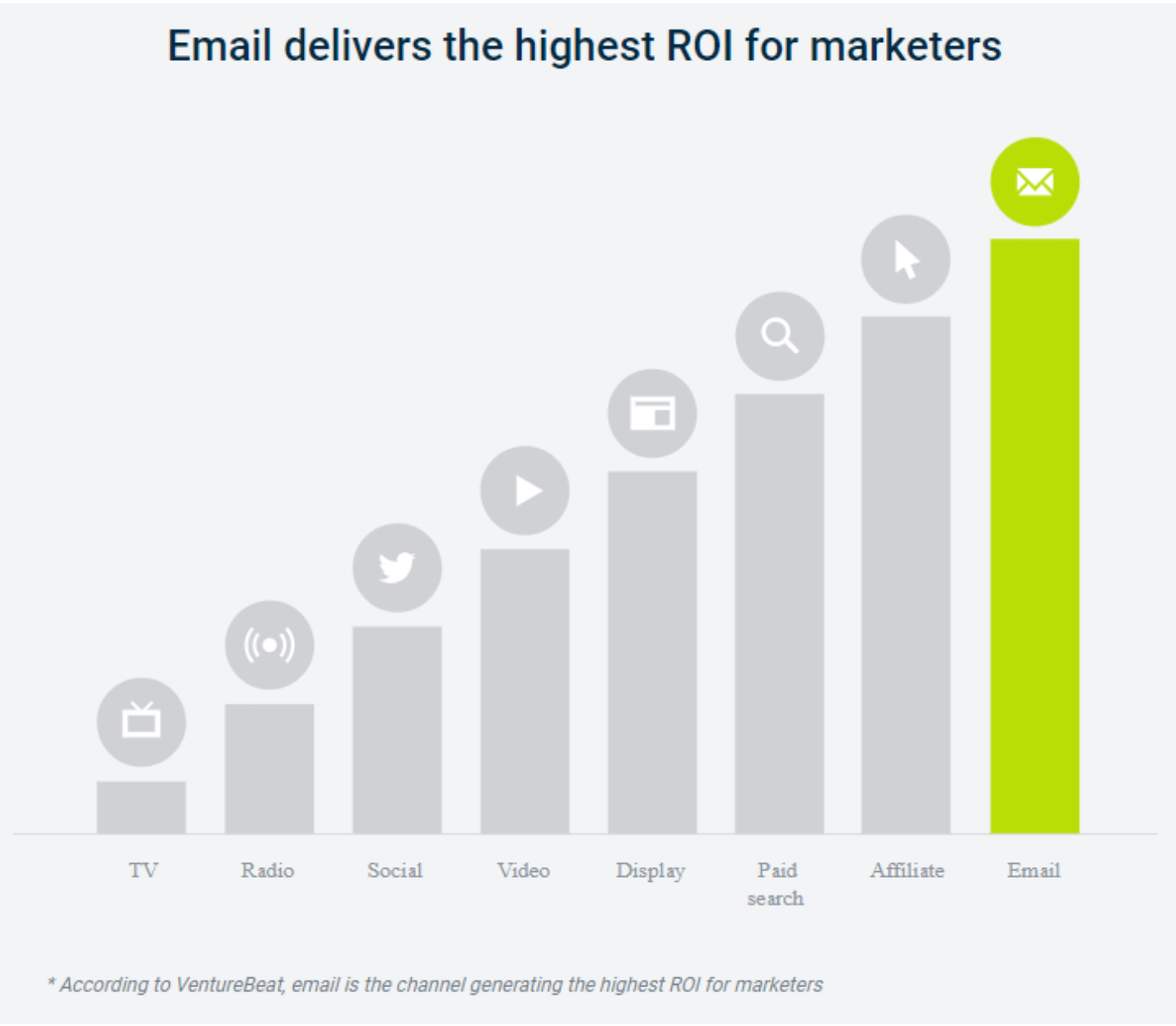
You work hard to grow your audience. I want to ensure an algorithm switcheroo doesn't suddenly strangle your access to these readers. Platforms will come and go in coming years, but an email list remains one of the best ways to directly communicate with your audience.
How do you have Medium readers come off of Medium and onto an email list? You could just ask them and have a call-to-action that says something along the lines of “Sign up for my newsletter.”
Here’s the thing, though: No one wants more emails. They do, however, want their problems solved.
So in digital marketing, it’s common to offer what is called a “lead magnet” or “ethical bribe” in your publishing as a way to invite people onto your email list. A lead magnet is a free piece of content you offer people in exchange for them joining your list.
You already encounter lead magnets all the time on the internet without even realizing it.
The gender-neutral apparel website TomboyX offers you free shipping on your first purchase in exchange for your email address; that’s a lead magnet.
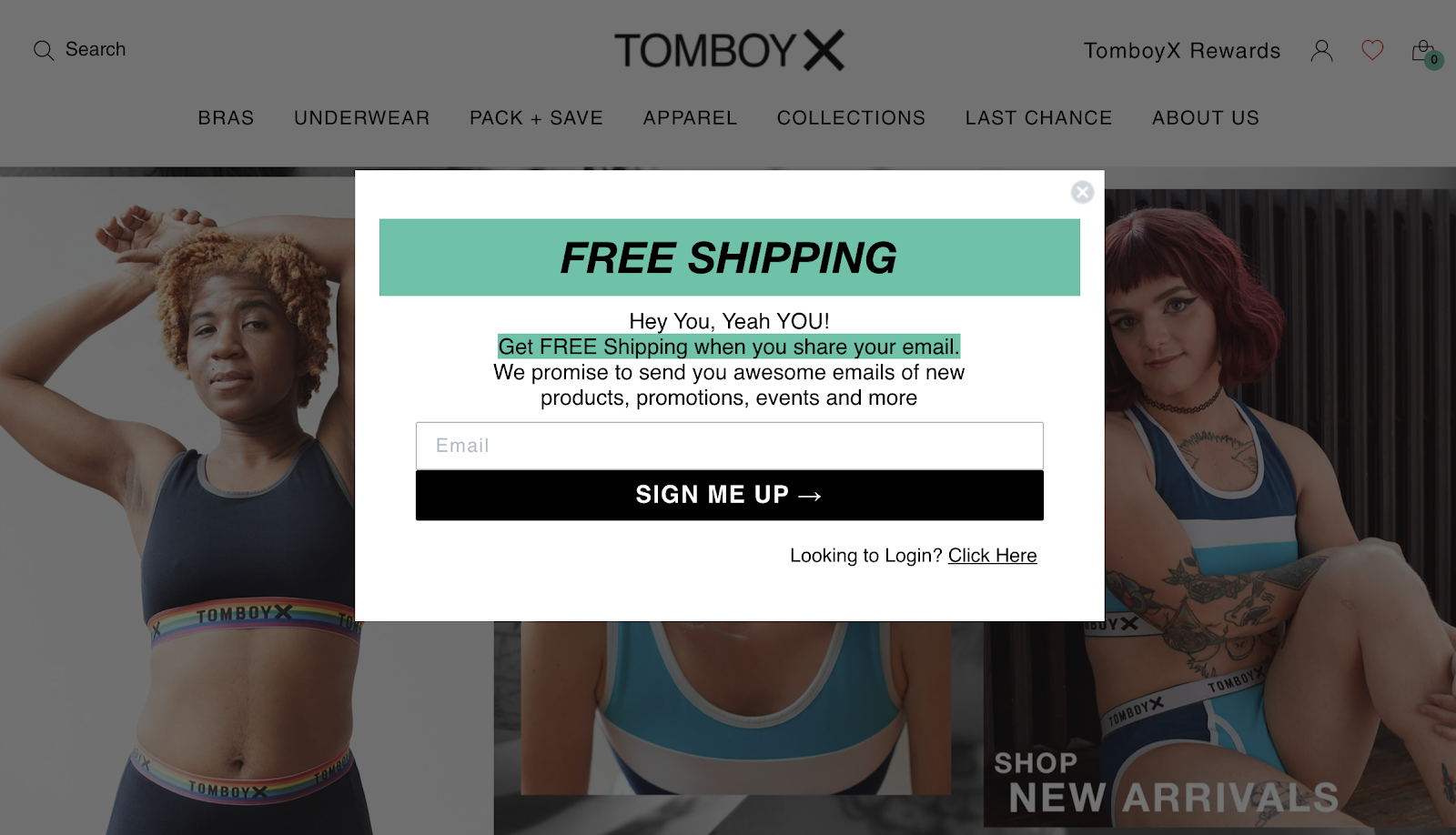
The media outlet Social Media Examiner has a report summarizing survey responses they’ve received from over 50,000 marketers; that’s a lead magnet.
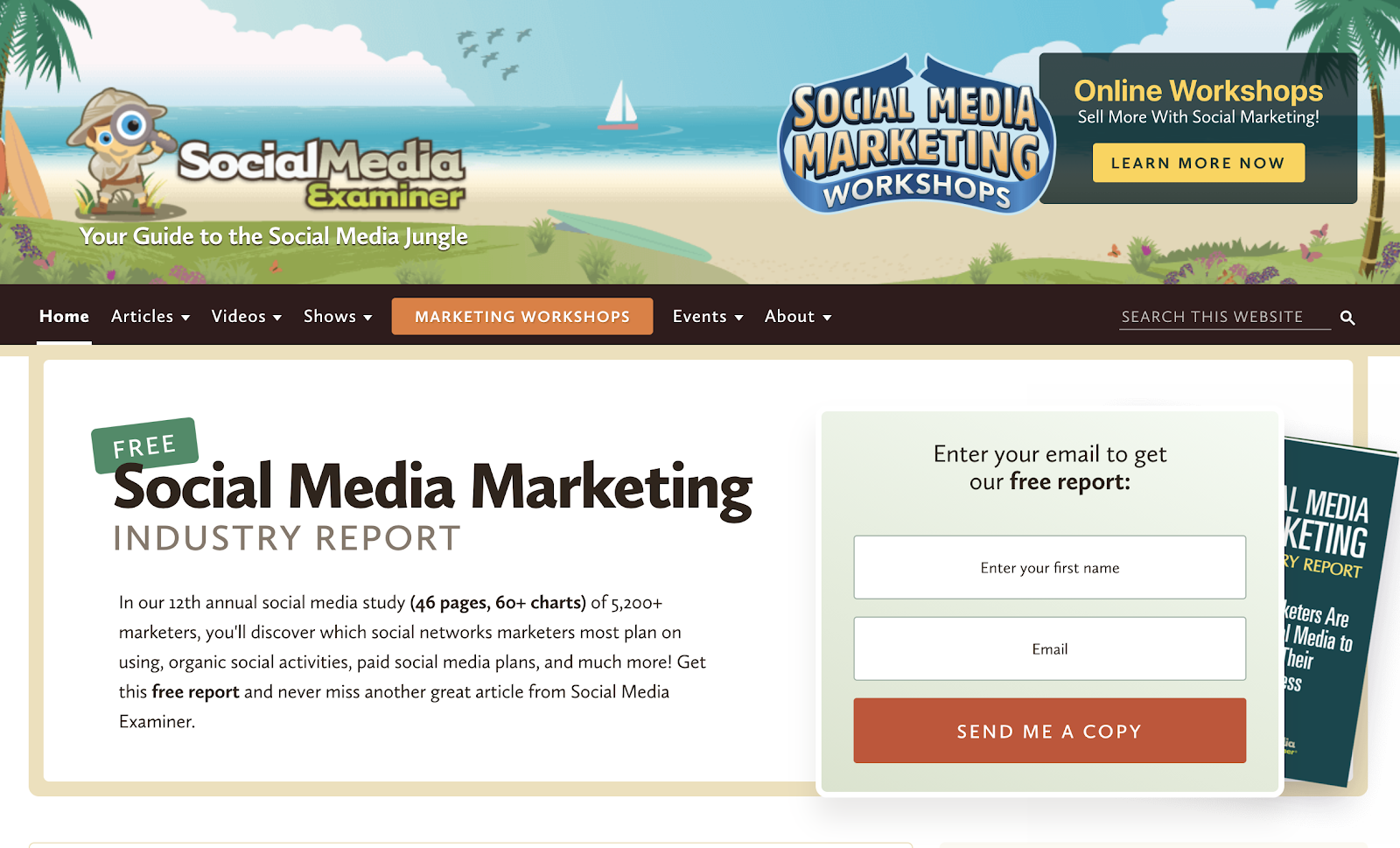
You’ve been seeing a lead magnet even within this guide. Our toolkit includes a PDF checklist, a 5-episode mini-podcast, and a behind-the-scenes video to help cement what you’re learning and get into action.
By offering a freebie that helps your readers, you’ll both help them and have an easier time growing your email list through publishing. As you grow on Medium… think about ways to invite readers over to your email list as well.
No. 2: Growing an Audience on Medium
Readers can follow you on Medium, and having followers can be a great way to get your articles seen.
We’ll talk about this more in Chapter 6, which covers metrics and analytics, but know that views on your articles and read time are more important than follower count.
Insight:A large follower count does not always mean more traffic on Medium.
Like most other big platforms, there are some people trying to cut corners. Buying followers or buying “claps”, Medium’s version of likes, is unfortunately becoming increasingly common. While that vanity metric looks good, it won’t contribute a whole lot to your growth.
Having readers follow you can be a distribution tactic along with publications and curation tags. The best advice I can give on follower growth is to write quality articles that make readers want to follow you in the future.
When readers come into your orbit on Medium, you don’t just develop an audience; you can also create a new stream of income. How, you ask? Read on to the next chapter to find out the two approaches you can take.
Key Takeaways
- When you write and grow your following on Medium, your followers will see your future articles in their feeds or daily digests - this is great for visibility.
- Also think about how you can leverage this visibility to grow an audience off of Medium that you can communicate with directly.
- The one asset I recommend you be building all the time is your email list.
How to Make Money on Medium
If you are looking to make money on Medium, there are two ways to do it.
- The first is to enroll in the Medium Partner Program and start getting paid by Medium themselves.
- The second is to sell your products, programs, or services to readers who have joined your email list.
I do both, personally! And you can do both as well, if you like. Let’s go through each of these strategies in a little more detail.
Strategy No. 1: The Medium Partner Program
Medium is a great marketing and visibility tool. But there’s something else about Medium that is pretty neat, and that is the Medium Partner Program. Medium will pay you for your content!
The Medium Partner Program allows you to get paid based on read time for your articles. There are some content creators who make so much money on Medium that it becomes a side hustle income or even their entire income.
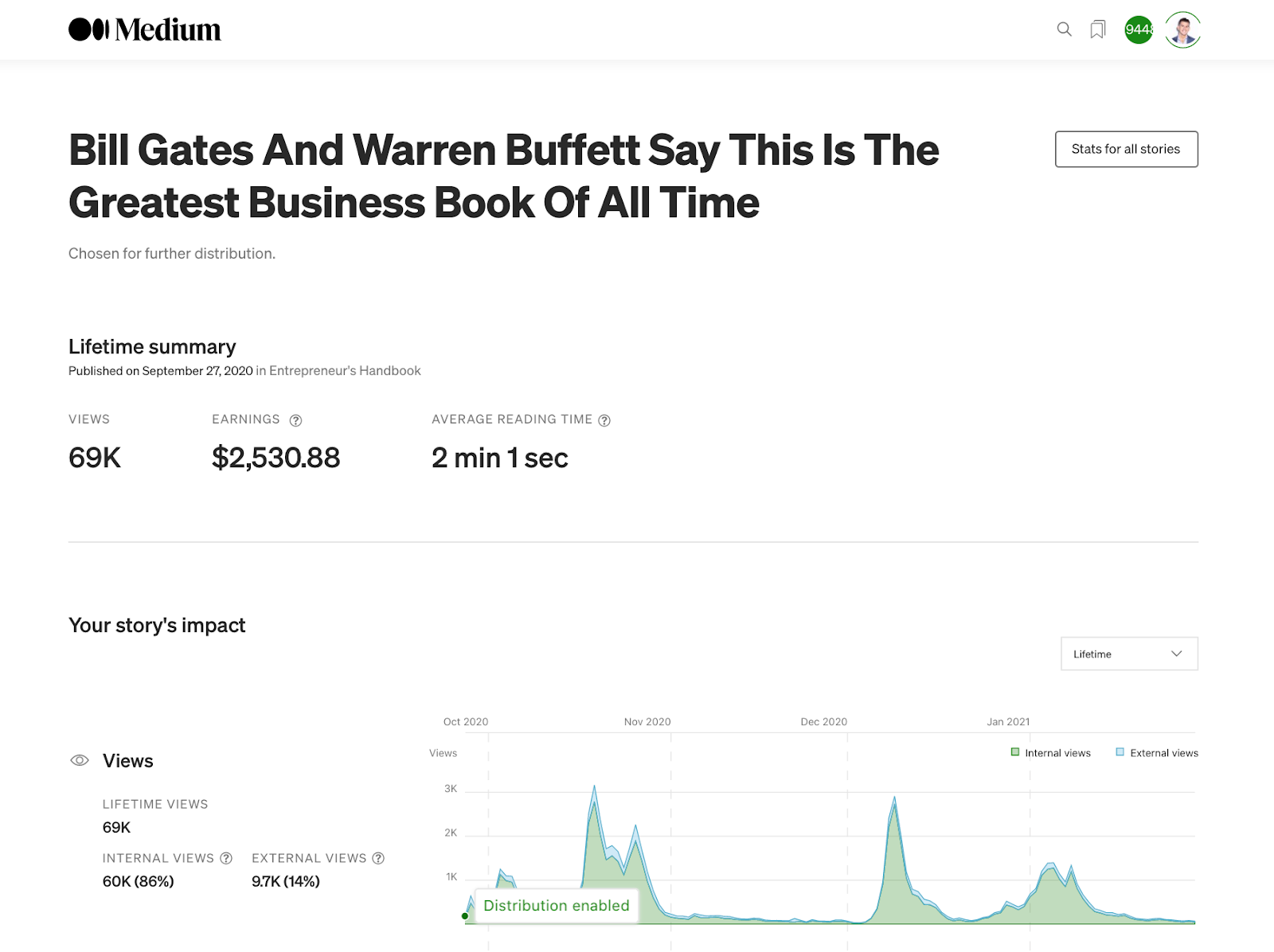
Example article stats, including payout earnings from the Medium Partner Program.
When you use the Medium Partner Program, articles that you place behind a paywall can monetize. You don’t have to put all your articles behind Medium’s paywall if you don’t want to.
You can also create friend links for any of your articles. A friend link is a backdoor link that lets non-Medium subscribers read your paywalled articles for free. Medium users who don’t have a subscription get three free articles a month, but an article read on a friend link doesn’t count as one of those three.
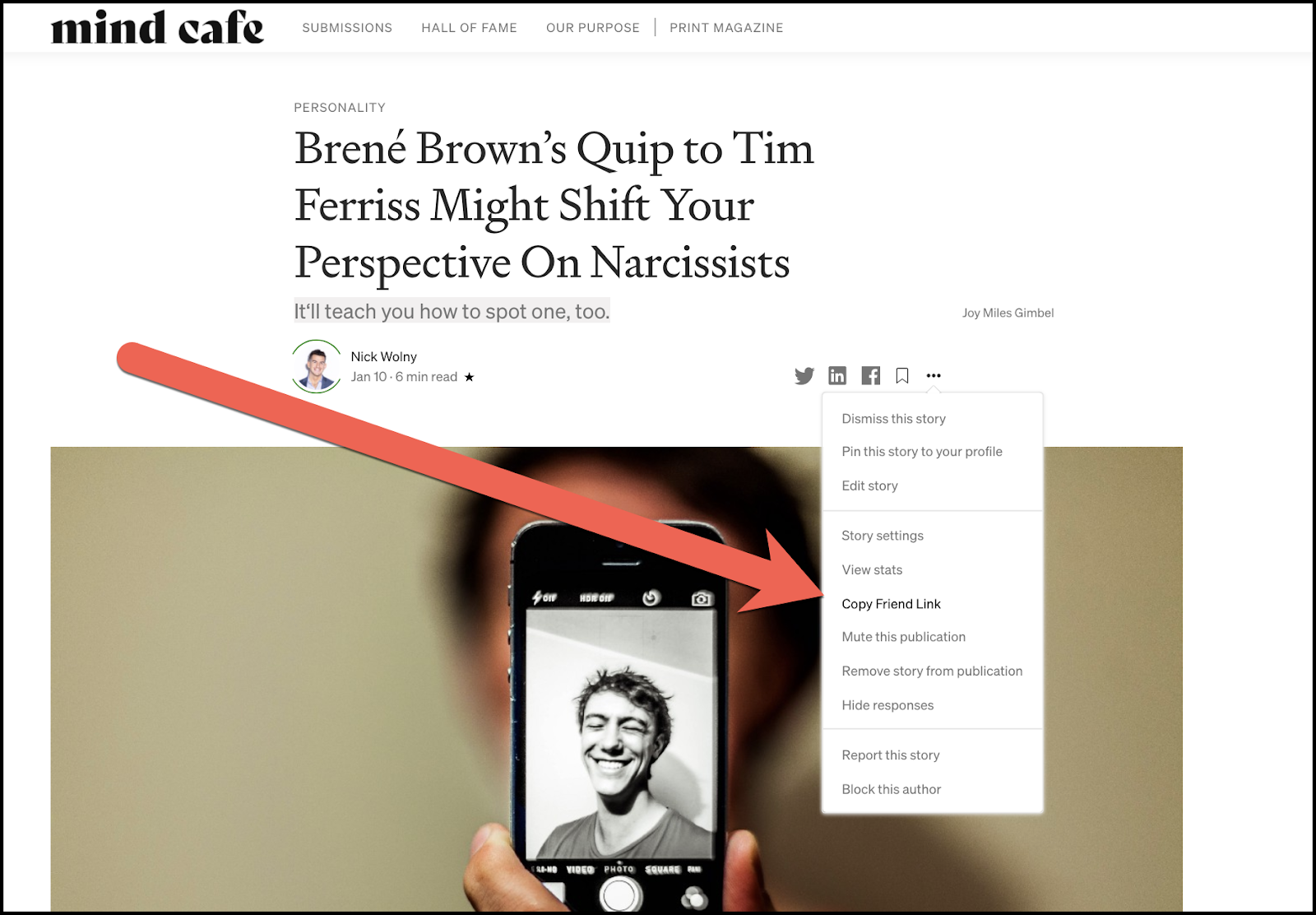
I don’t recommend you try to make Medium your entire income, as the partner program payouts can swing wildly from month to month based on distribution.
When you keep at it, however, your Medium earnings can begin to snowball, and that’s where it gets exciting. Here are my earnings from my first year on Medium.

Think about it: What could you do with an extra $100, $500, or $1,000+ a month? Now imagine that you’re being paid that number for your content while also growing your email list at the same time. That’s the magic of Medium.
Here’s the thing: to get results like these and beyond, you have to commit to learning the platform and publishing on a regular basis. Make a commitment and you’ll be handsomely rewarded!
Strategy No. 2: Sell to Your Email Subscribers
Another way to make money through Medium is to sell to email subscribers you have gained from your writing efforts on the platform.
As we mentioned in the previous chapter, an email list is one of the best audiences you can develop, because it allows you to communicate directly with your audience and not through some algorithm that limits your distribution. When you send an email newsletter, everyone on your list receives it immediately.
This means when it’s time to promote a product, program, or service of yours, you can do it via email. You can even automate emails that lead people toward your sales promotions, webinars, or challenges. In online business, converting 0.5%-1% of your email list into customers during a launch is considered successful.
At first, that sounds pretty low. But if you do the math, it can start to really add up.
- From a list of 1,000 subscribers, a $47 offer that converts at 1% would generate $470.
- From a list of 2,500 subscribers, a $197 offer that converts at 0.75% would generate $3,694.
- From a list of 5,000 subscribers, a $497 offer that converts at 0.5% would generate $12,425.
What if you’re a coach, a consultant, or a service provider? Sending a gentle “hop on a call with me” email can generate some leads.
Back in my consulting days, I once sent an email to 900 subscribers inviting them to book a consultation call with me. Four of them did, and I closed one of my four leads on a $4,000 package and another one of them on a small-bite $1,000 package. From my list of 900 people, that launch made $5,000.
Your email list can generate revenue, but you need to be bringing new subscribers in regularly for it to be a viable resource. Medium can do this for you.
Key Takeaways
- The Medium Partner Program is easy to sign up for, and lets your articles make money by putting them behind a paywall. You need 100 followers to become eligible.
- You can still share paywalled articles with your audience for free using “friend links”.
- Bringing Medium readers off of Medium and onto an email list will set you up to sell via email down the line if you choose.
- You can actually sell to Medium readers before they ever even see an email from you by using a “limited-time offer”.
Metrics on Medium
We’ve gone through quite a lot already together! So far we’ve covered what Medium is, what publications are, how to grow your audience, and how to make money with Medium if you so choose.
Now, what numbers should you pay attention to in Medium, and what other numbers can you ignore completely? In this final chapter, Metrics on Medium, we’ll do a quick overview of your dashboard.
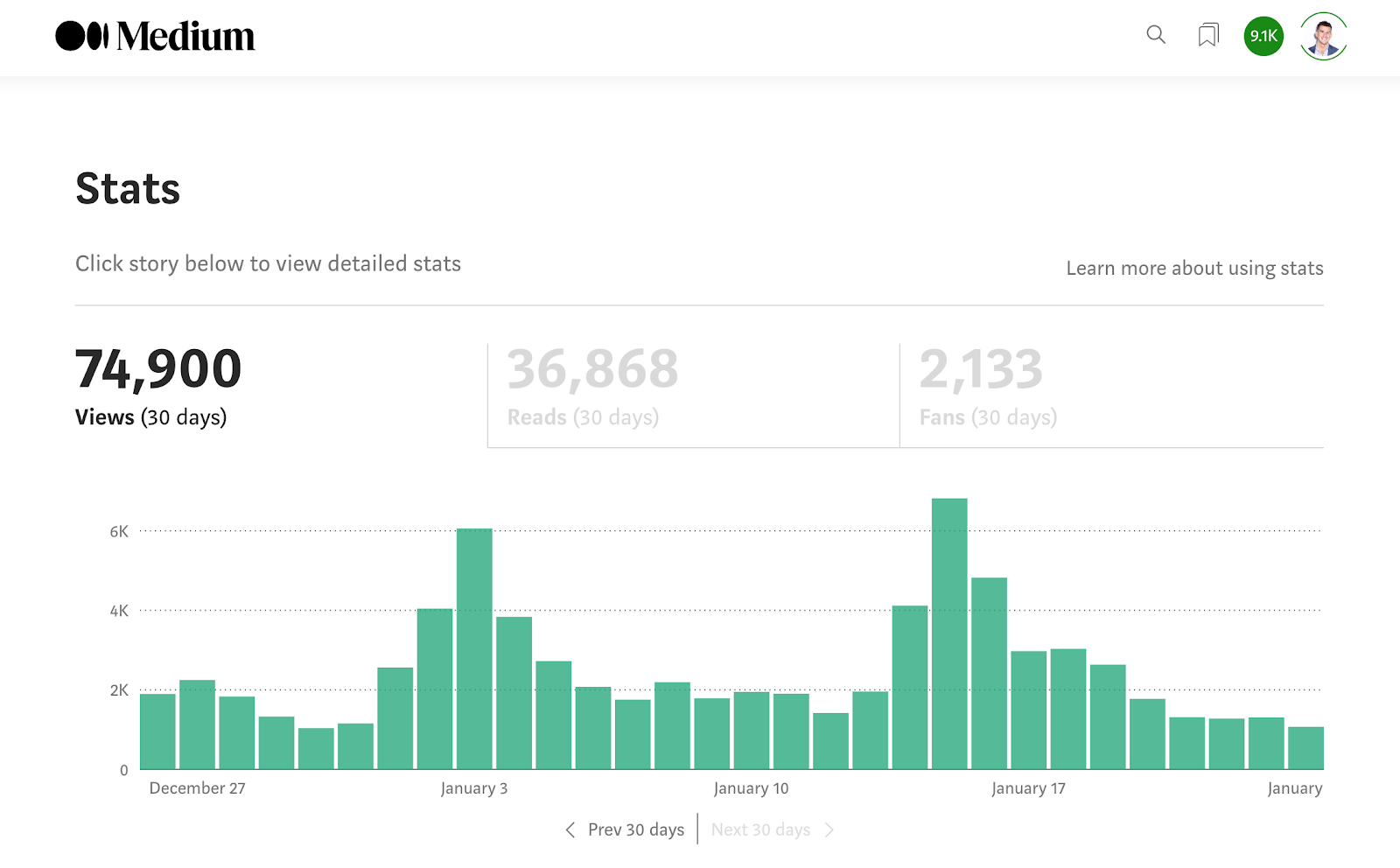
Metrics on Medium: A Breakdown
When you go to click on your Medium stats, it can start to feel overwhelming. What do all these numbers mean? Are these numbers good or bad?
Here's a rundown of the different metrics and what they mean.
Views
On Medium, views are measured by when someone has landed on an article of yours.
Already, a view is an achievement. It means that, in the sea of articles being published on Medium, someone picked your article, based on its headline and preview image. To get views on Medium, you must have clear or interesting headlines.
On the stats dashboard, you can see a summary of overall views for the past 30 days, and can also see previous months’ performance. You can’t pull reports, though. If you want to track performance for a given month, you’ll have to toggle to the nearest 30-day window, then add or subtract any straggler days manually. (I know, I know.)
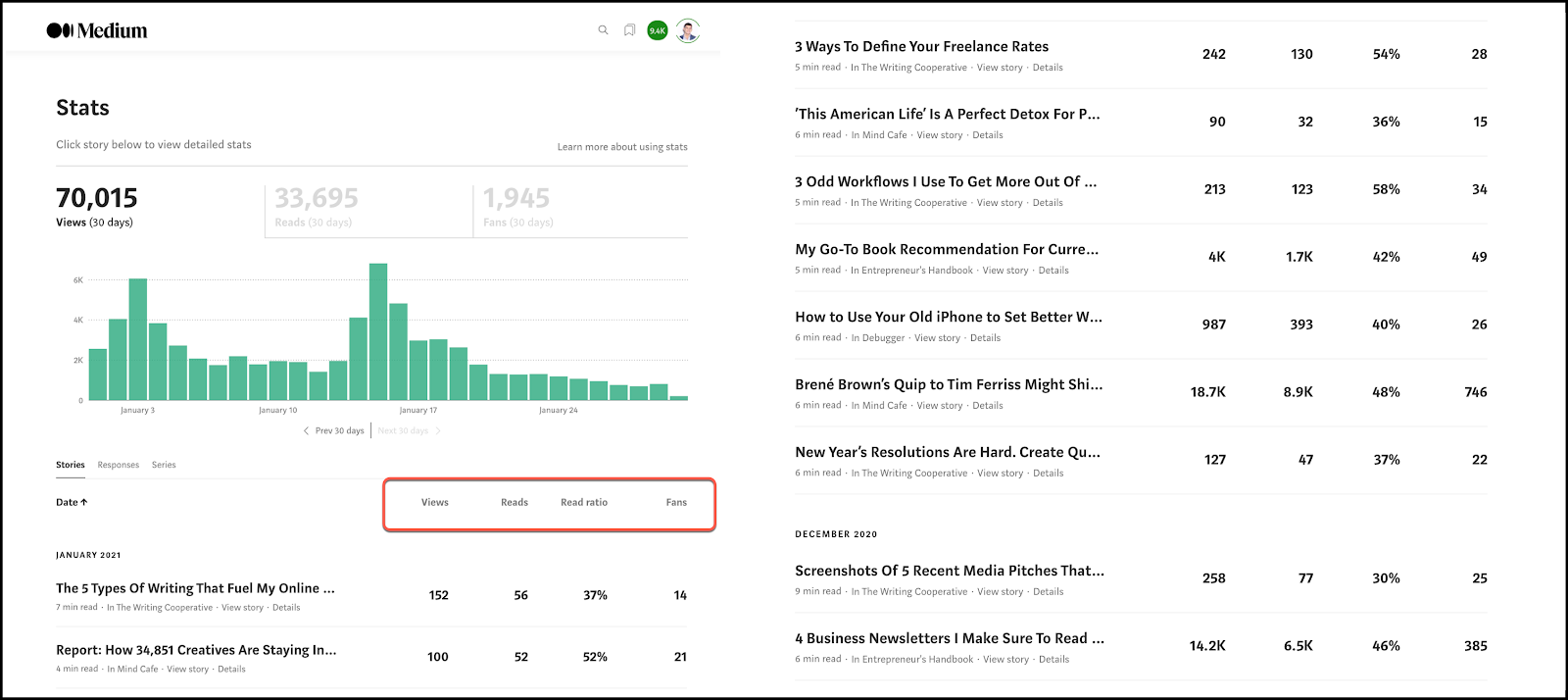
In stats, next to each article, you can see a summary of how your article has done. When you click on an article, you’ll get day-by-day stats of both internal and external views for that article.
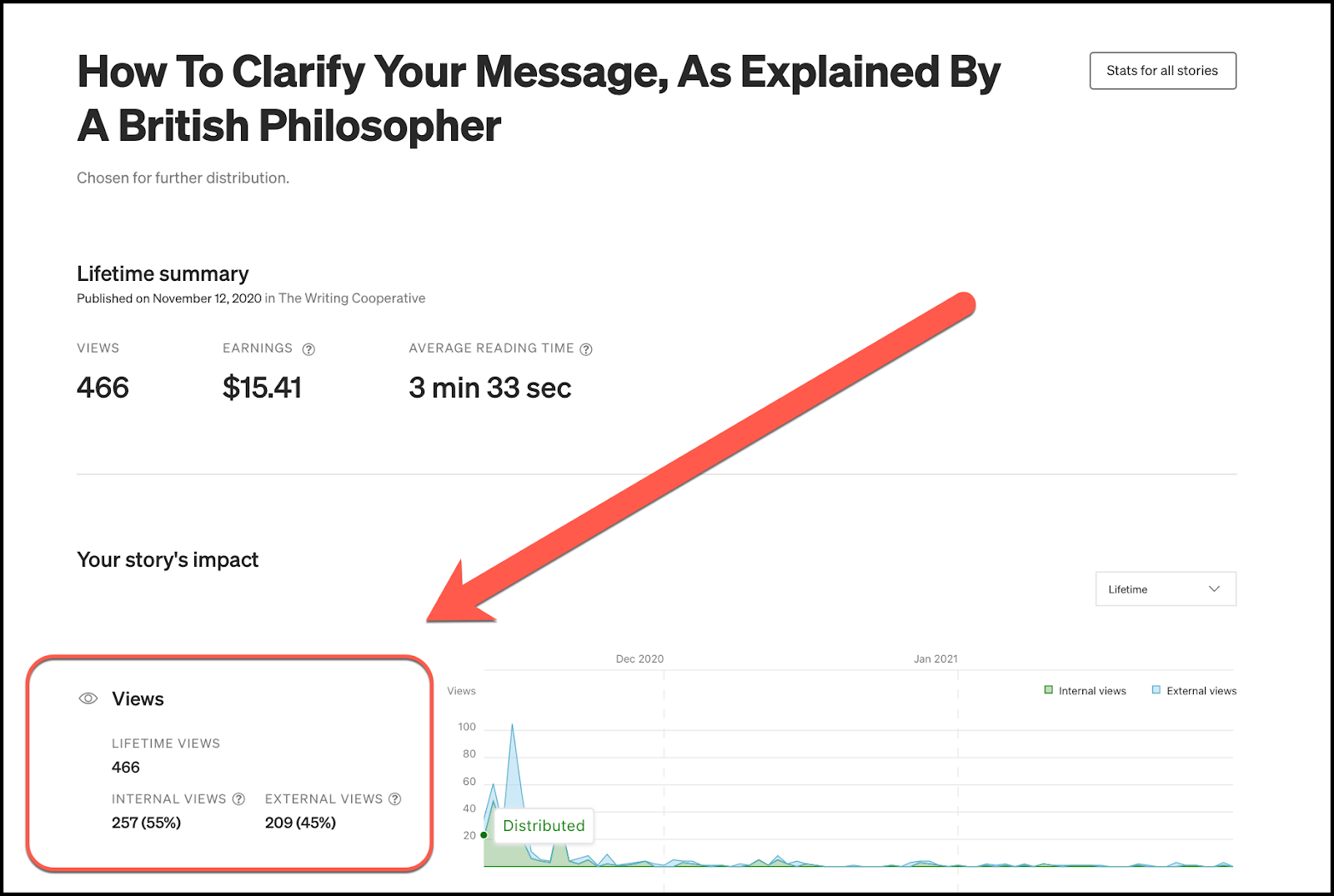
Views are like website traffic. Without views, we’re dead in the water, so they’re pretty important!
Reads and Read Ratio
Next, you have “Reads”, which Medium defines as the number of users who read the entire story.
Some readers will skim your articles and make it to the bottom, which would count as a read. The "read ratio" is the percentage of viewers that made it to the end of the article. I don't overthink this much; length of article is the main factor.
In individual articles, you'll also be able to see average read time. Read time is one of the main monetization factors in the Medium Partner Program. The longer you hold members' attention with your writing, the more you'll get paid.
While holding your reader’s attention for an article is certainly important, my experience is that the read ratio drops off the longer an article gets, so I wouldn't “read” too much into this metric (Zing!).
Tip: If you’re putting a call-to-action to join your email list at the bottom of your articles, your "reads" will be the number of people who actually saw it.
Fans
Fans are the number of unique users that have clapped for an article of yours. We’ll get to claps (Which are like “Likes” for Medium) in just a moment, but for now, know that a user can clap up to 50 times for an article on Medium.
This can make social proof look a little confusing. For example, an article with 500 claps could have 10 fans who each clapped 50 times. Or it could have 100 fans, who each clapped 5 times. Or it could have 500 fans, who all clapped once.
Fans will refer to the number of unique users who clapped for your article.
Additional Metrics on Medium
Claps
I ignore claps and recommend you do the same.
The problem with claps is that clap circles have cropped up all over the internet. Users attempt to juice their articles with tons of claps, and as a result you’ll sometimes see articles with thousands or tens of thousands of claps on them, which can feel demoralizing.
Here’s what to keep in mind: Clap counts don’t improve distribution. What improves your distribution is getting a lot of views and having good read time. This tells Medium that people are clicking to read your article and liking what they see.
Views-to-Subscribers Ratio
This is not a metric in Medium's stats, but I calculate it personally.
If you are running an email list, a metric that might keep you motivated is calculating your views-to-subscribers ratio. How many article viewers ended up becoming email subscribers?
To calculate this, I look at my Medium views for a given month, then look at how many new subscribers I gained from Medium in that given month. For me, my new subscriber count is 1-2% of my total views for the month.
For example, if I'm getting 5,000 views per month, and I'm bringing in 75 new email subscribers from that monthly volume, I could set goals for views, based on my audience growth goals.
Follower Count
You’re welcome to track your followers on Medium, but I wouldn’t worry too much about it. A high follower count might mean a little more distribution, but it takes some time to build.
Follower counts are a vanity metric. In our approach, the audience that is even more valuable is an email list.
Frequently Asked Questions
Is It Worth Writing on Medium?
Writing on Medium is a great way to practice your craft, grow your audience, and even earn royalties for your writing and dabble in the creator economy.
Do Medium Writers Get Paid?
Medium writers get paid by the Medium Partner Program. To be eligible for the program, you need to have a Medium account with at least 100 followers.
Can Anyone Start Writing on Medium?
Anyone can create a Medium account and start publishing on the platform, as long as the content follows Medium’s distribution guidelines.
How Many Followers Do You Need to Get Paid on Medium?
You need at least 100 followers to enroll in the Medium Partner Program and start earning royalties.
What Are the Pros and Cons of Writing on Medium?
The pros are that Medium has a built-in audience of users who like to read. The cons are that distribution is unpredictable, although there are some best practices to improve visibility.
What Is the Most Money Made on Medium?
In the summer of 2020, Medium reported that the top-paid writer on the platform made over $49,000. This was at the peak of the pandemic, however, when user activity on Medium was sky-high.
Final Takeaways
So there you have it! Thanks for sticking with me to the end, and hopefully after reading you feel excited and inspired about trying out Medium as a way to reach more people, spread your message, grow your audience, and even make some moolah on the side.
The internet landscape can be scary and challenging at times. If you love the written word, writing on Medium might be the perfect fit for you. ◆

“Thorough, down-to-Earth, and road-tested”
Dial in your strategy on Medium with The Medium Workshop , a comprehensive on-demand workshop replay that covers everything you need to know. One payment, lifetime access.
Thanks For Reading 🙏🏼
Keep up the momentum with one or more of these next steps:
💬 Leave a comment below. Let me know a takeaway or thought you had from this post.
📣 Share this post with your network or a friend. Sharing helps spread the word, and posts are formatted to be both easy to read and easy to curate, with nice image previews. You'll look savvy and informed.
📲 Connect on another platform. I’m currently publishing in these places. If you are too, say hello:
- Medium: Articles and thought essays.
- Threads: Casual, Twitter-esque commentary.
- Instagram: Media appearances, and some occasional IRL posts to Stories.
- TikTok: Occasional video scraps from reporting and life.
- LinkedIn: Buttoned-up posts.
📬 Sign up for my free email list. Financialicious is a free newsletter about online business and finance from a gay male editor’s perspective. Learn more and browse past editions here.
🏕 Up your writing game. Camp Wordsmith® is a content marketing strategy program for small business owners, service providers, and online professionals. Learn more here.
📊 Hire me for consulting. I provide 1-on-1 consultations through my company, Hefty Media Group. We're a certified diversity supplier with the National Gay & Lesbian Chamber of Commerce. Learn more here.

